This philosophy extends naturally into the realm of themed entertainment, a market Cuningham entered in 1986 through its collaboration with Universal Studios on the pioneering Back to the Future ride—the industry’s first motion-based simulator experience.
Now, after more than 35 years serving the sector, Cuningham is renowned for its forward-thinking design approach and passion for immersive storytelling, not only inspiring guests but connecting people through authentic, meaningful experiences.
Cuningham projects have included providing architectural design services for the revitalisation of Disney California Adventure and Castle Fantasy Faire at Disneyland Park in California, as well as for Medieval Times in Arizona, Mystic Springs Destination Resort in China, and concept design for Alpensia Resort in South Korea, which served as the home to the 2018 Winter Olympics.
Building on this success, the company has recently opened a new office in Orlando, which reinforces its connection to the world's themed entertainment hub, while underscoring the firm’s national and international reach.
This expansion embeds Cuningham in the broader creative conversation and cements its reputation as a national leader capable of supporting clients worldwide.
Kathleen Herrington, associate principal and themed entertainment market sector leader; David Hyde, principal and design director; and Gregory Houck, principal and design director, tell blooloop more about the expansion and share how the company’s collaborative, joyful approach sets it apart.
Active contribution
Cuningham opened its Orlando office earlier this year, marking its seventh US location.
With this launch, the company establishes a presence in the heart of the themed entertainment industry, bringing it closer to its existing clients and enabling more real-time engagement and hands-on involvement.
 Kathleen Herrington, Gregory Houck, and David Hyde
Kathleen Herrington, Gregory Houck, and David Hyde
“This move reflects Cuningham’s commitment to growing our storytelling and design capabilities,” says Herrington. “Because Orlando is a hub for innovation, talent, and idea exchange, being part of that ecosystem helps us stay at the forefront of where the industry is heading.
“Ultimately, our Orlando office strengthens our ability to collaborate, innovate, and deliver world-class experiences – not just as local participants, but as active contributors to the creative energy that defines this industry.”
“Opening an Orlando office is really just a natural continuation of our broader, ongoing vision,” adds Hyde.
“This vision began decades ago with establishing close proximity to a hub of creative companies such as Walt Disney Imagineering, Universal and Warner Brothers in the Los Angeles area.
"Proximity to these influences made Cuningham stronger and more creative in the entertainment arena and allowed us to further envision themed entertainment projects within the US, Asia, the Middle East and Eastern Europe.”
Collaboration as a creative tool
The company believes that collaboration is not just a value but a creative tool, and the new office exemplifies this focus, helping the team to work closely with its clients at every step to translate their creative vision into built results.
“We’re bringing everyone along on the journey from the beginning, which means everybody feels connected to the project story and the outcome,” says Herrington.
 Th BOATHOUSE at Disney Springs\u00ae, Lake Buena Vista, Florida, USA
Th BOATHOUSE at Disney Springs\u00ae, Lake Buena Vista, Florida, USA
“This includes the owners. That way, there are no surprises. We really try to bring them along throughout the process, especially when we’re working with clients who like to have a high level of control over their property, as is the case in themed entertainment projects.
“Does that make things more complicated? Absolutely. Sometimes, they might not fully understand a particular design choice that carries a hidden purpose or is intended to create an emotional impact. So we’ll engage in more conversations and take the time to align on the details.
"That collaboration always leads to a stronger, more thoughtful outcome.
“In the end, it’s about helping the client feel connected — not just to the creative story we’re telling, but to the process itself. That sense of ownership makes everything move forward more smoothly and meaningfully.”
Creating a core story
Cuningham creates its immersive experiences by combining imaginative storytelling, technical accuracy, and brand consistency.
The success of this approach, Hyde says, is rooted in the development of the ‘core story.’
“A narrative begins with an idea, while a story is built from many sources,” says Hyde. “Much like a novelist begins to explore an idea and then builds through research, dreaming, trial and error, and evolving an idea into experience, a design idea needs to be grounded in a location, attributes, and personality.”
Often informed by a masterplan and interweaving myriad sources, the team develops a core story that guides, directs, and influences every aspect of the project.
 Epic Learning Campus Deep Space Auditorium, Madison, Wisconsin, USA
Epic Learning Campus Deep Space Auditorium, Madison, Wisconsin, USA
“Given that process, the key to sustaining creativity throughout is a deep commitment to embedding collaboration at the heart of how we work,” says Herrington.
“I see my role as helping to maintain that creative connection from concept through construction. From the earliest blue-sky phase, I make sure all disciplines: architecture, interior design, landscape, and technical, have a voice in shaping the story and intent of the project.”
This extends throughout the design process and into construction, which offers an additional opportunity to refine and realise the story in partnership with internal and external teams.
“Ultimately, keeping collaboration alive means fostering trust, encouraging shared ownership, and making sure everyone, from concept designers to construction administrators, feels connected to the creative intent and empowered to contribute to its success,” says Herrington.
Without ego
This collaborative ethos is underpinned by an ego-free culture which runs throughout the company.
“You really see it in the way Cuningham teams collaborate and in how we build relationships with our clients,” says Herrington. “Our ego-free culture means that ideas are valued based on their worth, not on who they come from. Everyone, regardless of title or discipline, has a voice and feels empowered to contribute creatively."
 Celestial River Resort, Jiaxing, People’s Republic of China
Celestial River Resort, Jiaxing, People’s Republic of China
“That sense of humility and respect creates an environment of trust and collaboration. In other words, problem-solving is a collective act. It allows us to focus on what’s best for the project, not personal agendas.
“Day to day, it really just means we talk openly, work together, and don’t hesitate to roll up our sleeves. Whether we’re tossing around design ideas, tackling a tricky technical problem, or jumping in to meet a client’s needs, everyone’s in it together.
“And Nathan [Harris, CEO] is a phone call away for anyone in the firm and is eager to listen and help. We’re lucky; that kind of accessibility isn’t something you find in most companies.
“And for our clients, this no ego culture means they get a partner who listens, adapts, and truly invests in their vision. It creates relationships built on transparency and shared success, which is why so many of our collaborations are long-term and feel deeply rewarding.”
Crafting joy
Jim Scheidel [former Cuningham chair and themed entertainment design pioneer, now retired], once said: 'I do this to see the smiles when we are done.’
“Joy… that’s why we do what we do,” agrees Hyde. “This is how we move through all the hard work. This statement is what makes it worth doing.”
 Luzhou Aviation Park, Luzhou, People’s Republic of China
Luzhou Aviation Park, Luzhou, People’s Republic of China
“For me, joy in the design process comes from curiosity, collaboration, and the shared excitement of discovery with our teams and clients,” says Herrington.
“Even under tight deadlines and high expectations, maintaining that sense of playfulness is essential, and it keeps the work inspired rather than mechanical.”
This is seen in both ethos and process.
“The way that we illustrate and the tools that we use early on in a design bring out a sense of playfulness,” says Houck. “We start with very loose, playful sketches. We’re not using AI or Revit.
"We are starting loose and free, and this comes across in our final designs. Hand drawing is crucial to this playfulness. It reminds us that great design is as much about curiosity as it is about precision.”
Freedom to play
But how do you maintain that sense of play in a high-pressure, high-stakes entertainment project?
“It’s really fun to work with our people,” says Herrington.
“Once you get into that anxiety mode, you’re done. So we try to foster an atmosphere of trust and openness where ideas can flow freely, encouraging the team to explore, sketch, and question without fear of failure."
 Luzhou Aviation Park, Luzhou, People’s Republic of China
Luzhou Aviation Park, Luzhou, People’s Republic of China
"We remind ourselves that we’re creating spaces meant to spark wonder and delight, and that energy often becomes contagious.
“In the end, joy becomes both a design tool and a source of resilience, and it is what allows us to stay creative, connected, and inspired, even in the most demanding moments.”
Storytelling first
Drawing on its diverse range of experience, the Cuningham team works together to create distinctive and insightful design solutions.
With extensive expertise in restaurant and retail design, Houck explains that storytelling is the thread that runs through all of the company’s projects.
“Our storytelling informs the way Cuningham approaches guest engagement in all of our markets, particularly in hospitality, retail, themed entertainment and restaurants,” he says. “The link between storytelling and restaurants in particular is very strong.
“Restaurants are essentially live stage productions where guests are both the players and the audience. In restaurant design, we use our storytelling abilities to tell love stories, mysteries, adventures, and stories about history."
 Epic Wizards Academy King’s Cross Dining Hall, Madison, Wisconsin, USA
Epic Wizards Academy King’s Cross Dining Hall, Madison, Wisconsin, USA
“Restaurants that start design with a story tend to be more successful, memorable, and authentic. It’s the best way to create an evocative atmosphere. It’s also the best way to be true to brand identity.
“If a design is true to its brand and story, the resulting immersive experience will be memorable and successful.”
Breadth of expertise as a strategic advantage
With a diverse portfolio spanning sectors including cultural, education, gaming, healthcare, hospitality, mixed-use, residential, themed entertainment, restaurants, retail, and workplace, Cuningham offers a comprehensive, cross-disciplinary perspective that few competitors can match.
“Our cross-sector experience is one of our greatest creative strengths,” says Herrington.
“This diversity enables us to bring fresh perspectives from other industries into themed entertainment - whether it’s a focus on human wellbeing, the storytelling and engagement found in education projects, or the technical precision of complex environments.
"It enriches how we think about guest experience, functionality and storytelling.”
We design with emotion in mind, and people often tell us that’s what makes our environments truly unique and one of a kind.
Hyde says: “In themed entertainment, there’s a tremendous opportunity to bridge different areas of expertise. We bring together the bold, imaginative ideas that define the industry with the practical requirements of spaces like parks, education and training facilities, offices, and back-of-house spaces - all essential parts of a successful project.
“That balance between creativity and functionality is key. Likewise, the sense of playfulness and hospitality we cultivate in our entertainment work carries over into our other markets, helping us create spaces that are fun and relaxing, dynamic yet calming.
"We design with emotion in mind, and people often tell us that’s what makes our environments truly unique and one of a kind.”
“Exactly,” adds Herrington. “It pushes us to think more experientially and infuses emotion into every environment we design.”
Industry icons
Cuningham has been part of some of the most celebrated themed entertainment projects of the past 35 years, from Back to the Future: The Ride to Star Wars: Galaxy's Edge at Disneyland and Jurassic World Adventure at Universal Studios Beijing.
“Working alongside industry icons like Disney and Universal has reinforced the importance of storytelling discipline, attention to detail, and the power of collaboration,” says Herrington.
 Luzhou Aviation Park, Luzhou, People’s Republic of China
Luzhou Aviation Park, Luzhou, People’s Republic of China
“One of the biggest lessons is that every design decision, no matter how small, must serve the story and guest experience.
“These partners hold incredibly high standards, and their commitment to narrative integrity challenges us to continually refine our craft and think holistically about how architecture, interiors, and environment come together to create emotion and authenticity.
“Disney and Universal approach design as a dialogue: between creative vision, technical feasibility, and guest experience.
"Working within that framework has taught us to be flexible yet highly responsive and deeply collaborative, always looking for solutions that preserve the creative intent while meeting operational and budget realities.
“I also believe these partnerships have shown us that innovation thrives within trust and alignment. The best outcomes happen when creative teams and clients share a purpose and respect each other’s expertise.
"That spirit of collaboration and storytelling excellence continues to shape how we approach every project, regardless of scale or brand.”
Acclaimed projects
Cuningham has been part of the design team for 17 Thea Award-winning projects, highlighting how the company’s distinctive approach helps it to rise above the competitive landscape.
“I believe what sets Cuningham’s approach apart is our ability to seamlessly integrate storytelling, design, and technical execution into a unified creative process,” says Herrington.
Our strength lies in being collaborative storytellers and problem solvers...That balance between imagination and practicality is what allows our projects to stand the test of time.
“We don’t treat these as separate phases, but instead, they inform one another from concept through completion, making sure that every design decision reinforces the narrative and guest experience.
“Our strength lies in being collaborative storytellers and problem solvers. We work closely with our clients and creative partners to understand their vision, then translate that into spaces that are both emotionally resonant and operationally sound.
"That balance between imagination and practicality is what allows our projects to stand the test of time.
“Another key differentiator is our culture of humility and partnership. We approach every project as part of a larger creative ecosystem, respecting the expertise each collaborator brings. This fosters innovation and ensures that the final experience feels cohesive, authentic, and deeply engaging.
“It’s our commitment to deliver story-driven design excellence, and our ability to bring big ideas to life without losing sight of the guest’s emotional journey, that continues to set Cuningham apart in such a competitive creative landscape.”
Human connection
New technologies, elevated audience expectations, and expanding global opportunities present opportunities for future innovation within the themed entertainment sector.
“I see the next big opportunities for innovation emerging at the intersection of technology, storytelling, and human connection,” says Herrington.
 Celestial River Resort, Jiaxing, People’s Republic of China
Celestial River Resort, Jiaxing, People’s Republic of China
“New tools like AI, immersive media, and responsive environments are expanding what’s possible, but the real innovation will come from how we use these technologies to deepen emotional engagement rather than just add spectacle.
“People are tired of technology for technology’s sake. We all have AI in our pockets now - on our phones, in our homes - so no one needs to go to a theme park just to have another “immersive” tech experience.
“For me, the next step is finding ways to connect emotionally through those experiences. Technology alone can’t do that. You can build the most impressive environment, but without that human or emotional connection, it doesn’t stick.
“Globally, we’re also seeing a move toward more localised storytelling. The most compelling new projects are the ones that reflect community values, cultural identity, and regional narratives.
“For example, there’s an interactive museum in Portugal [the Thea Award-winning QUAKE, the Lisbon Earthquake Centre] built around a devastating fire that destroyed a city - it’s now an award-winning experience because it tells a deeply human story.
“There’s also tremendous potential in blurring the lines between education, entertainment, and place-making. Audiences today are looking for experiences that are both meaningful and shareable, where learning, play, and inspiration coexist.”
Enduring value
This approach underpins Cuningham’s commitment to creating enduring value for its clients.
“For me, enduring value in themed entertainment is about creating experiences that continue to inspire, educate, and emotionally resonate long after opening day,” says Herrington.
“It’s not just about the initial wow factor. We need to consider how spaces can stand the test of time. Enduring value means crafting environments with depth, authenticity, and flexibility so they remain relevant as audience expectations evolve.
“Long-term success for our clients comes from designing experiences that sustain both cultural and operational vitality, aka spaces that draw visitors back, tell stories that can grow over time, and support the client’s business and mission goals.
“Whether it’s a theme park, museum, or destination, the real measure of success is when the place continues to connect with people and feel alive years later.”

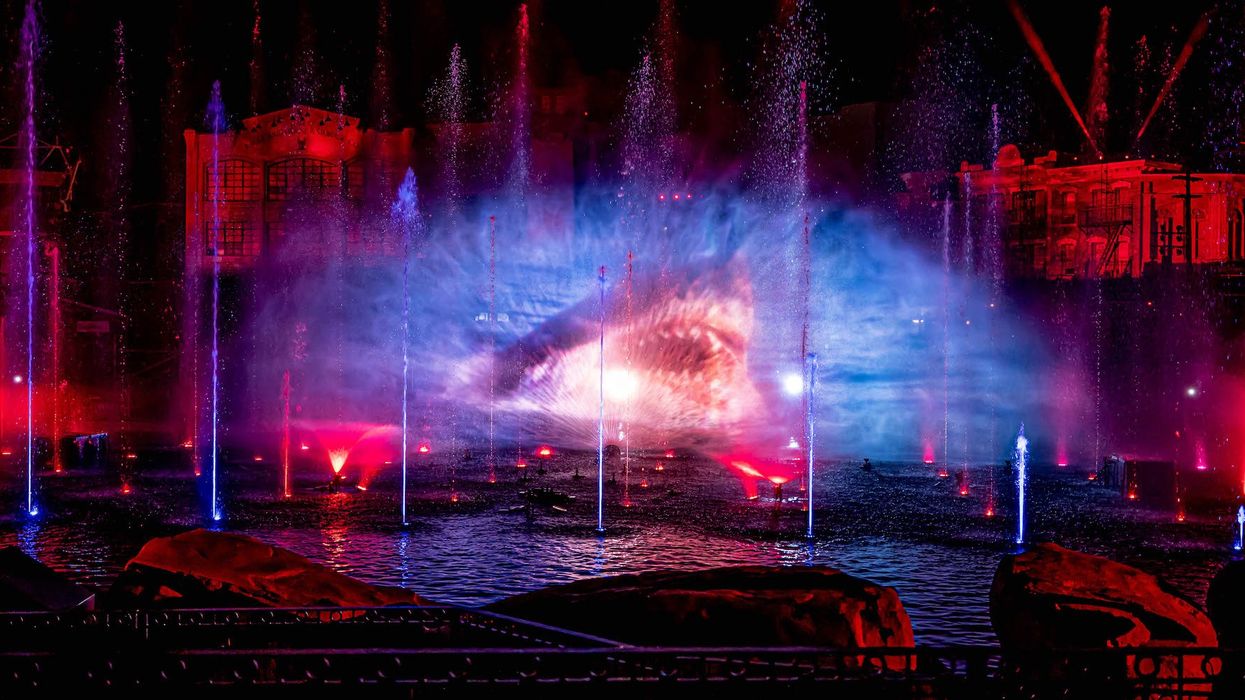
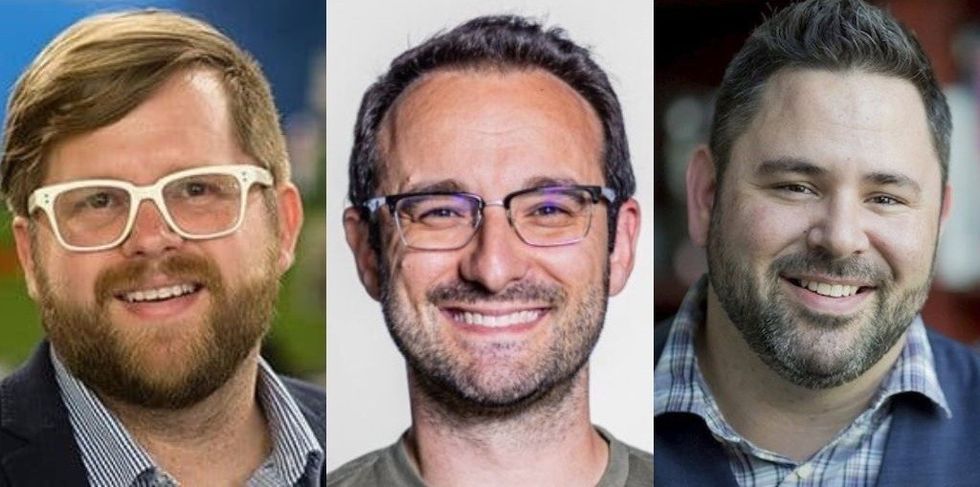 Jason McManus, Jim Shumway, and Mike Aiello
Jason McManus, Jim Shumway, and Mike Aiello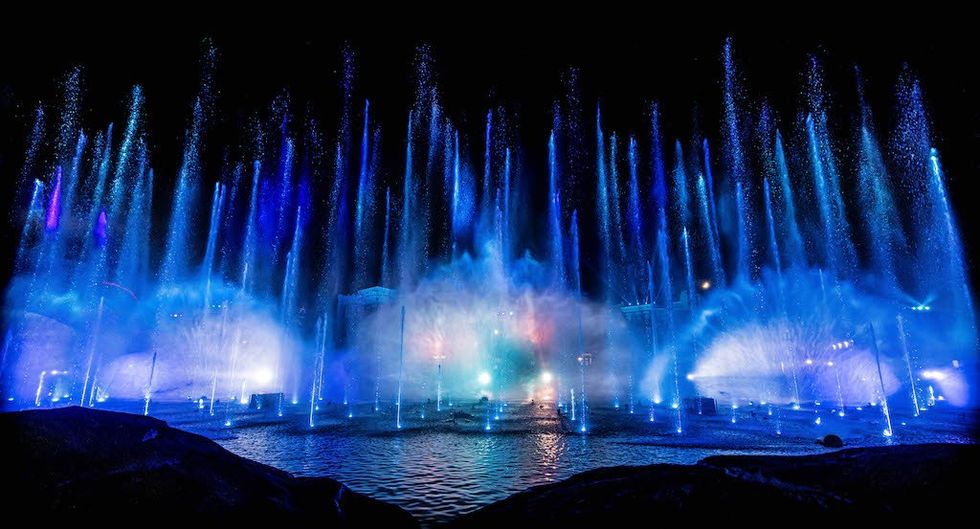
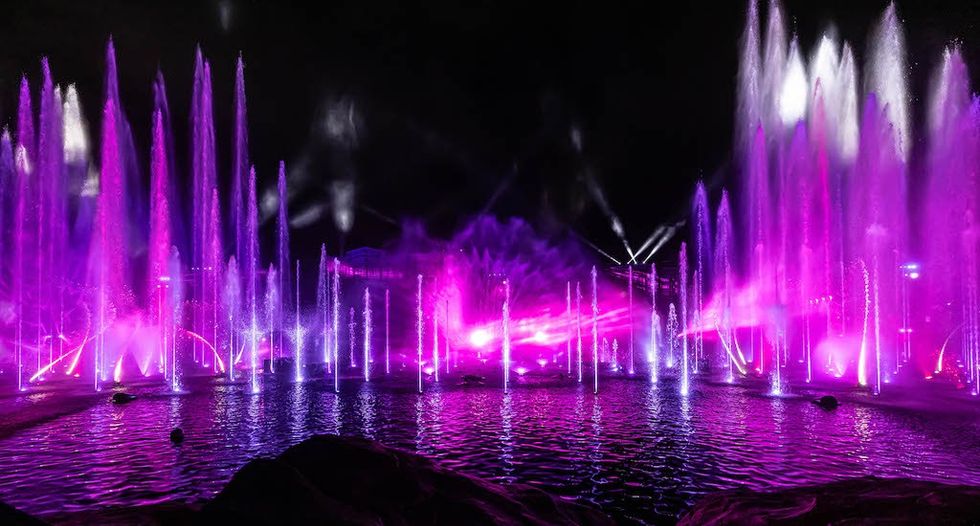


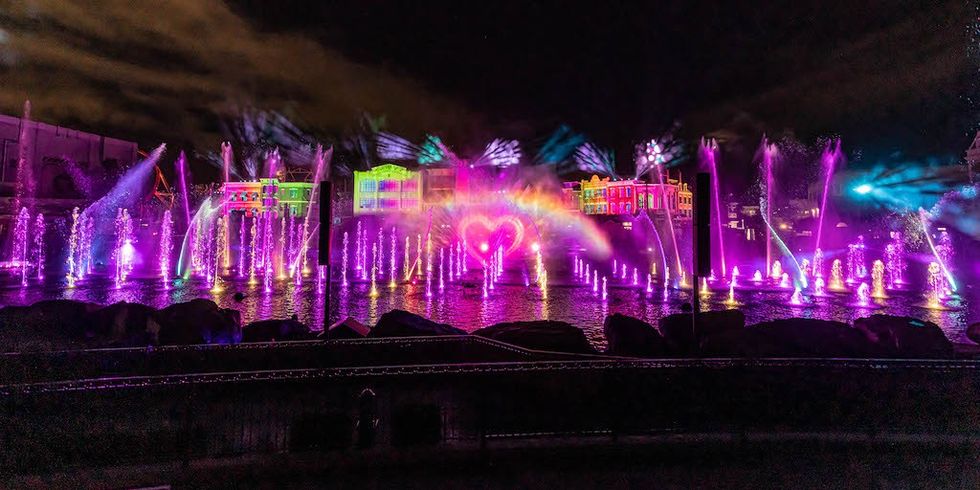
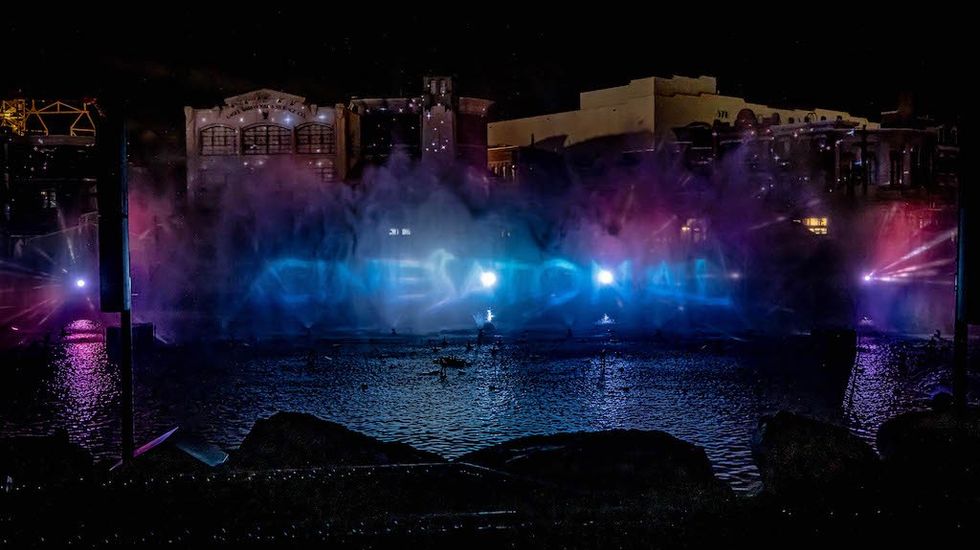
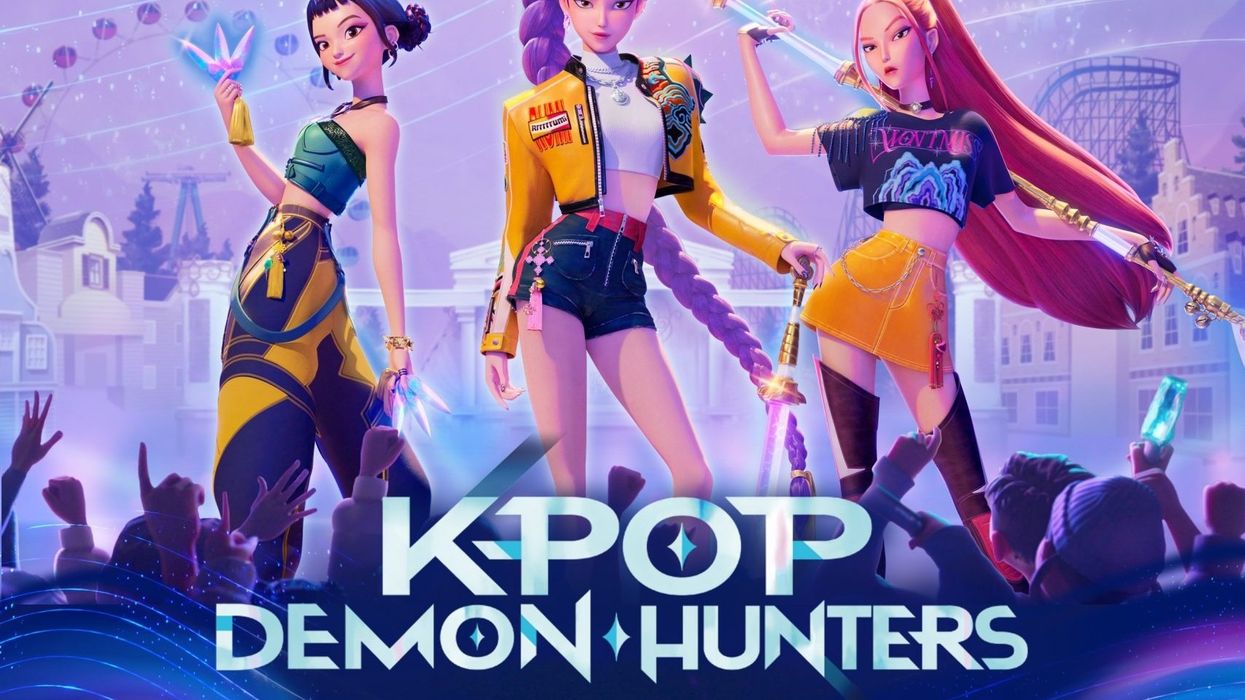
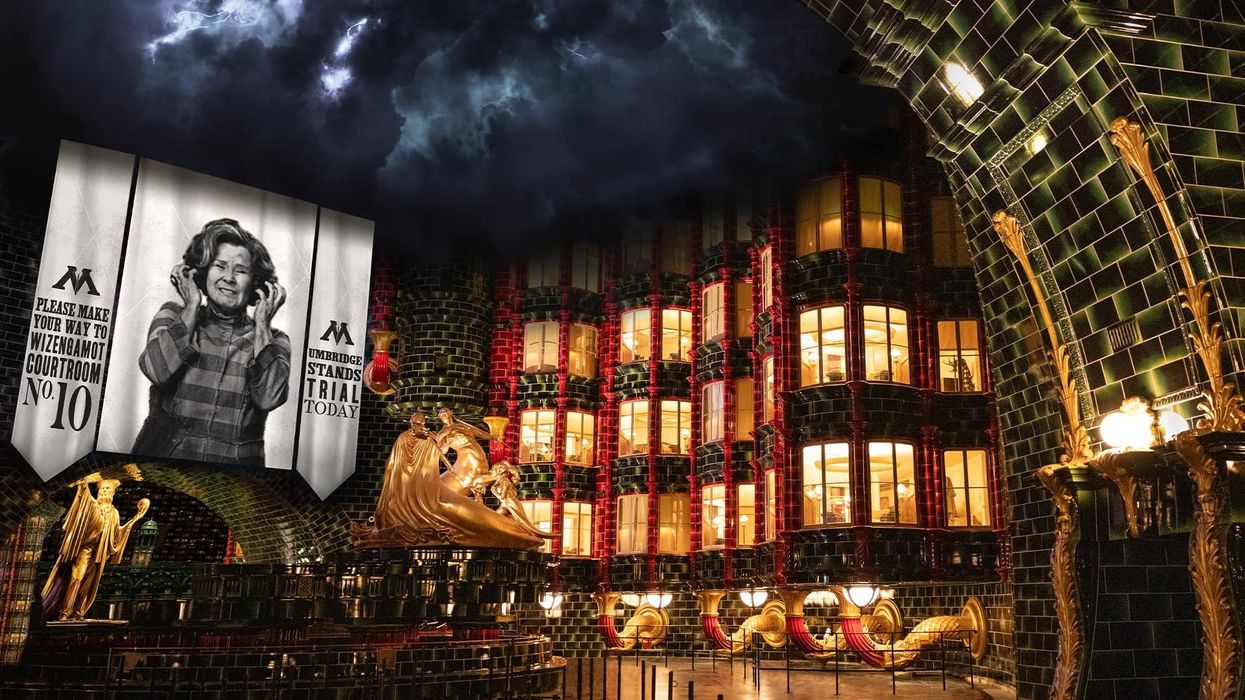

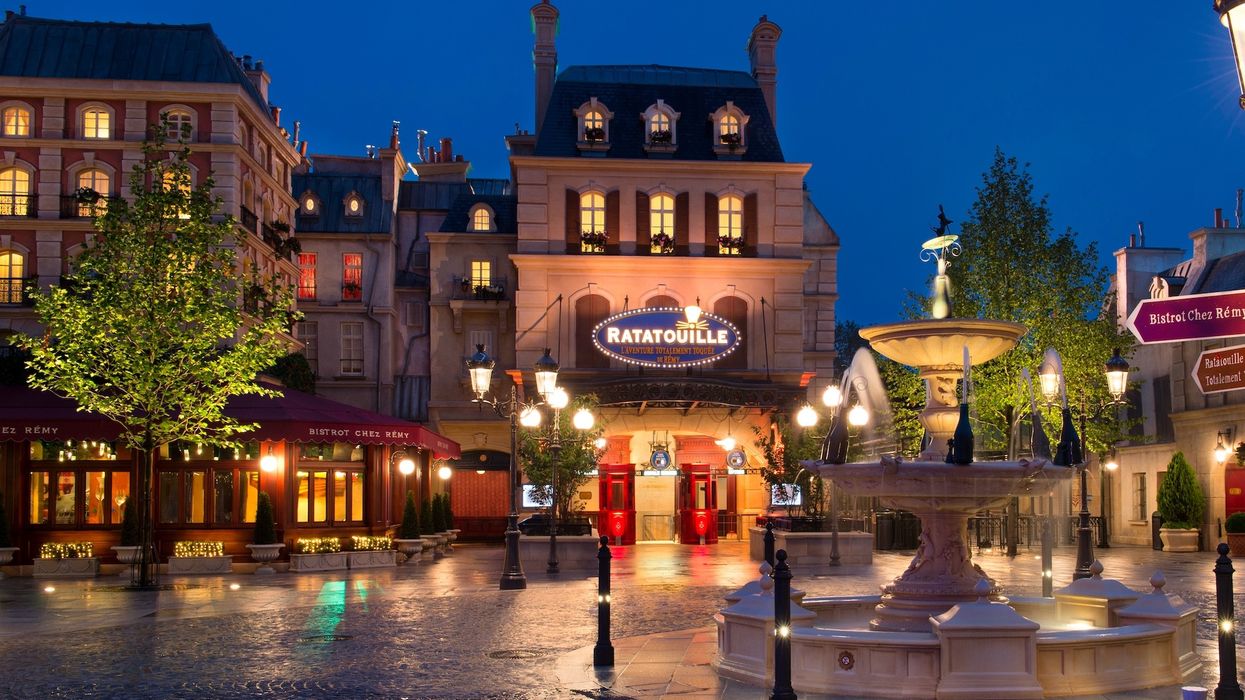
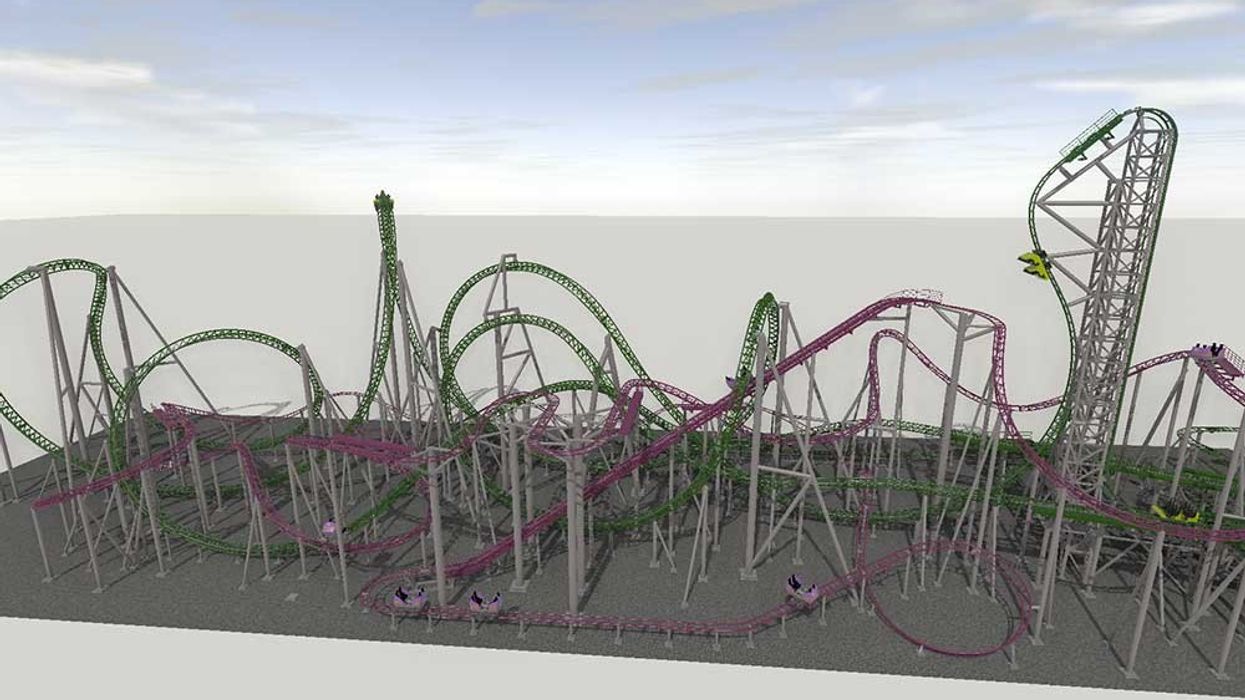
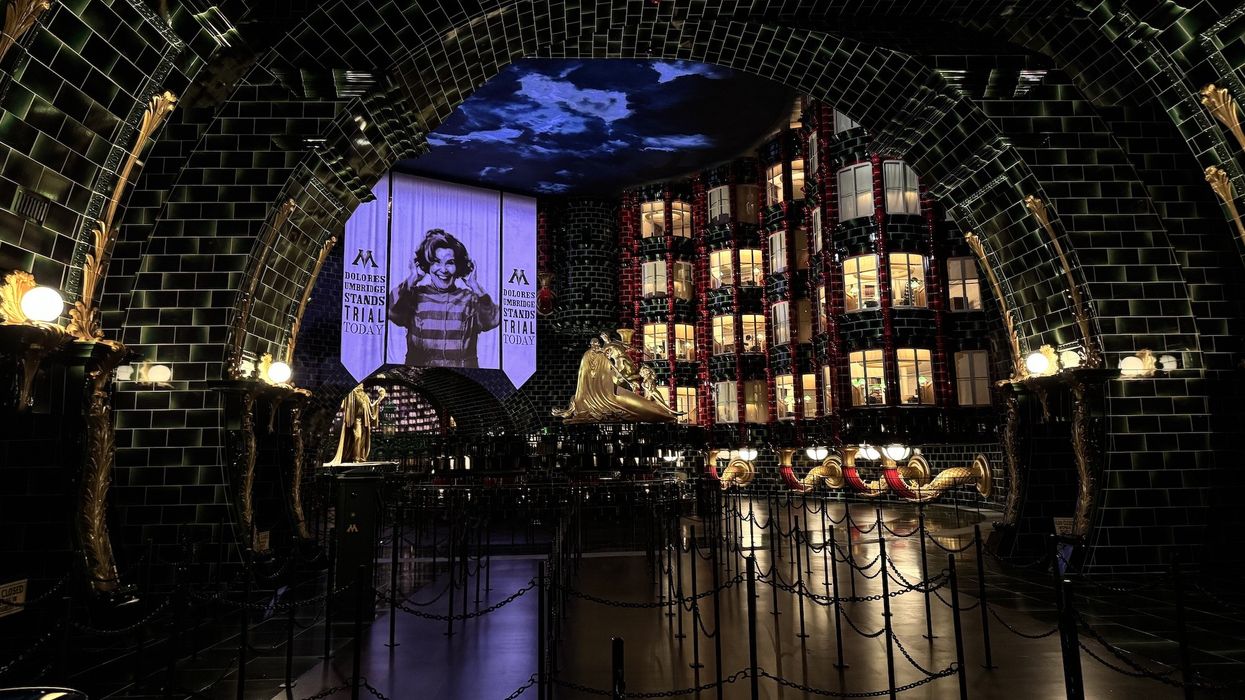

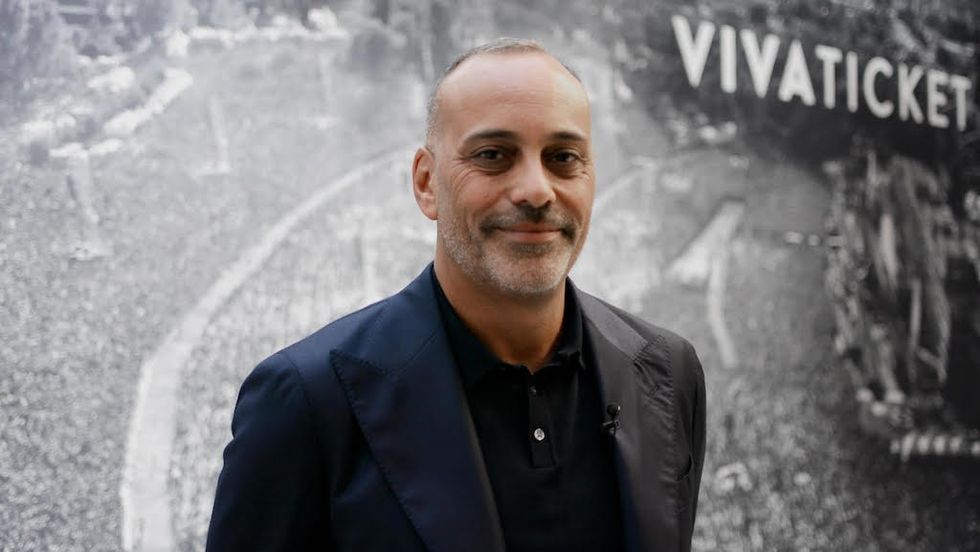 Silvano Taiani
Silvano Taiani

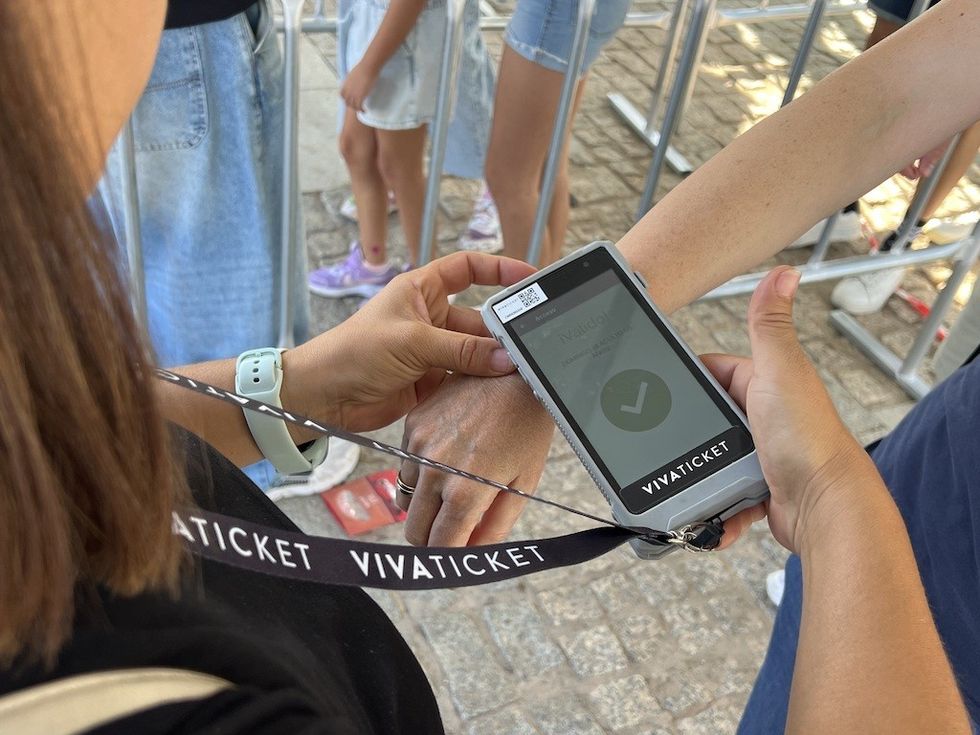
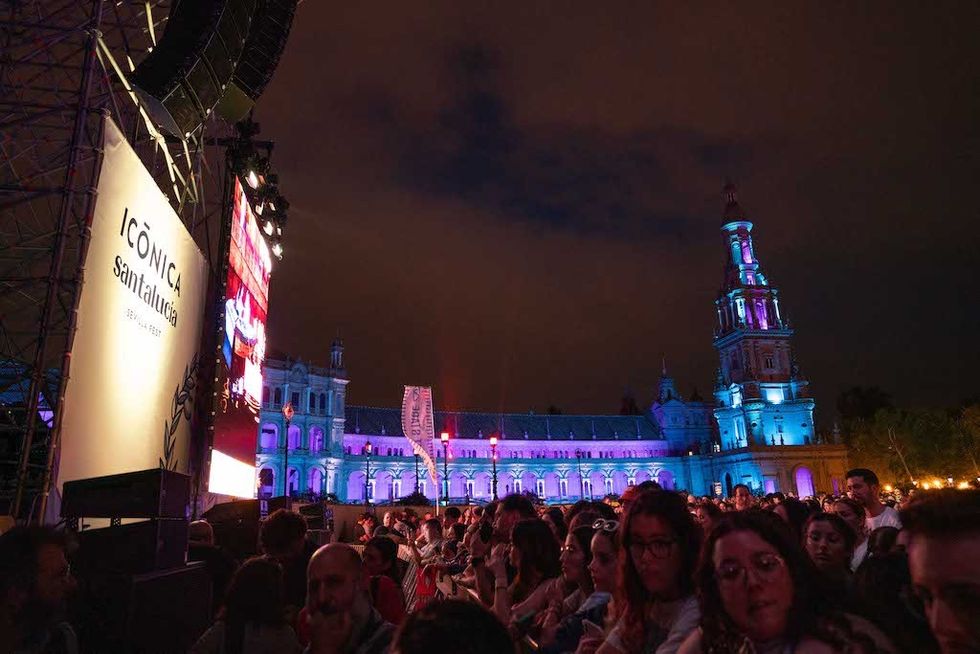
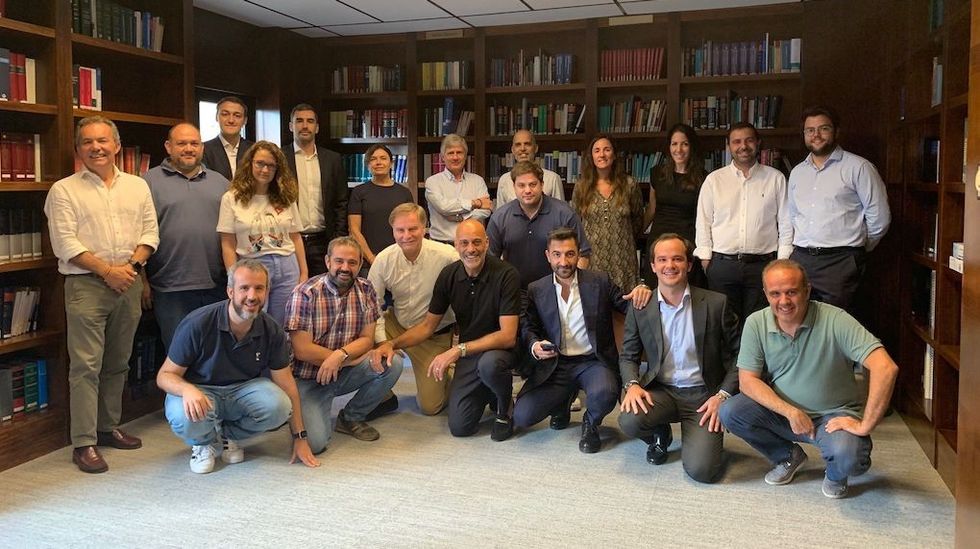
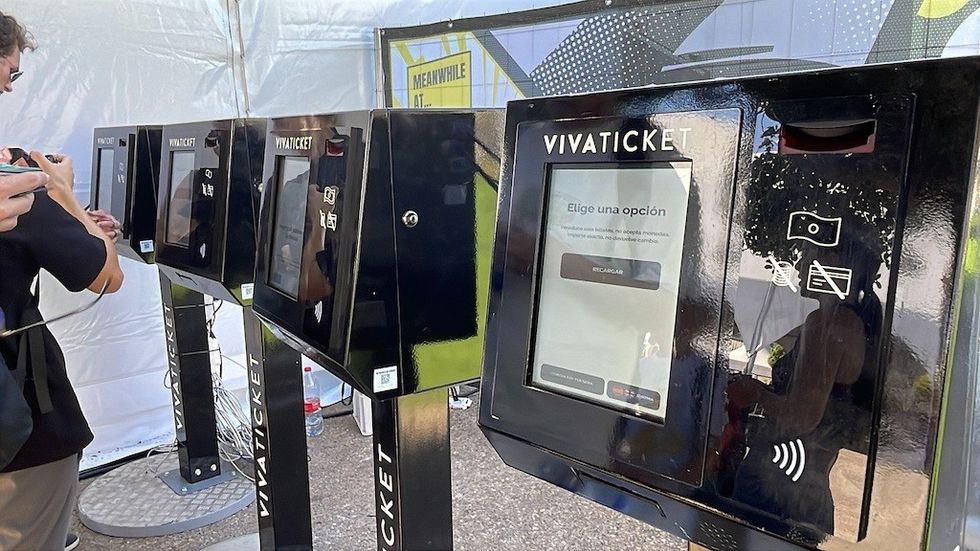
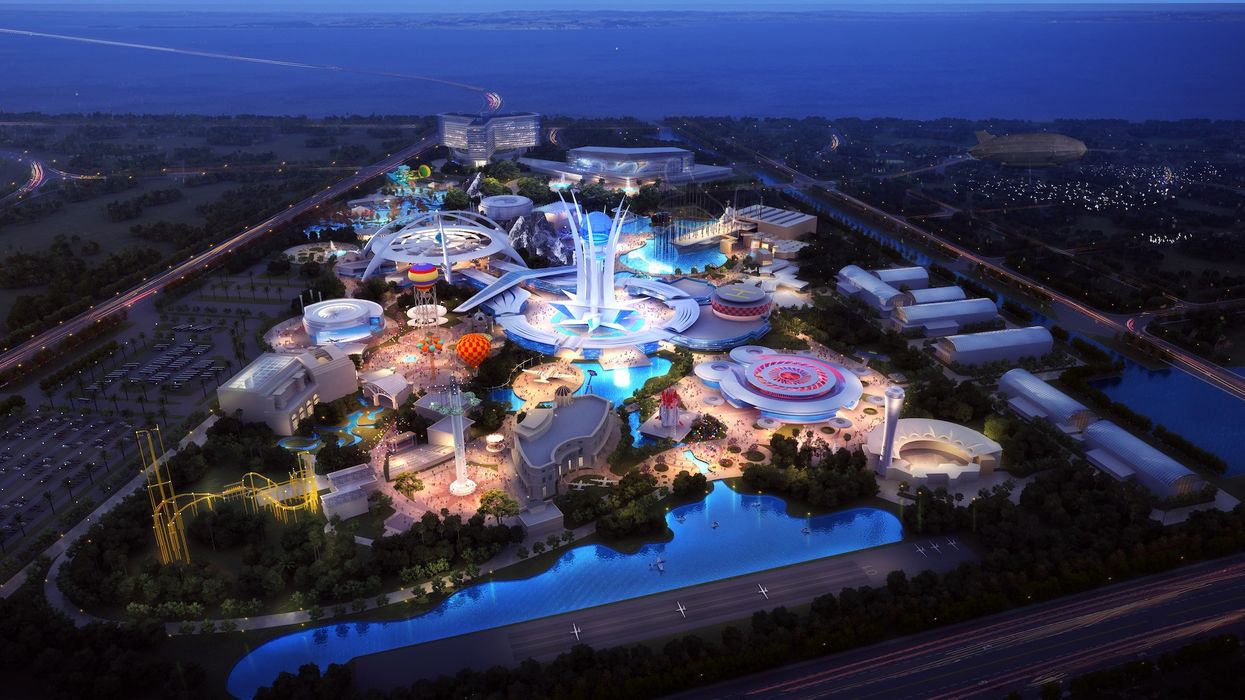
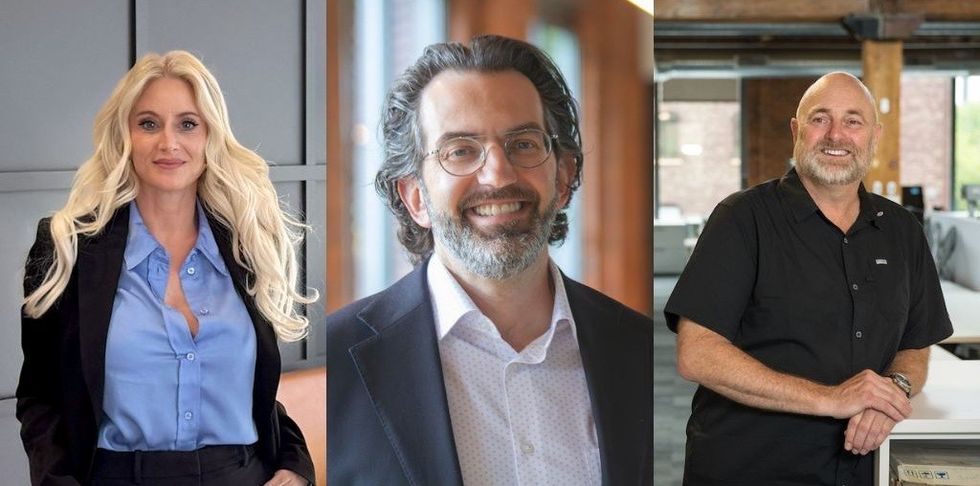 Kathleen Herrington, Gregory Houck, and David Hyde
Kathleen Herrington, Gregory Houck, and David Hyde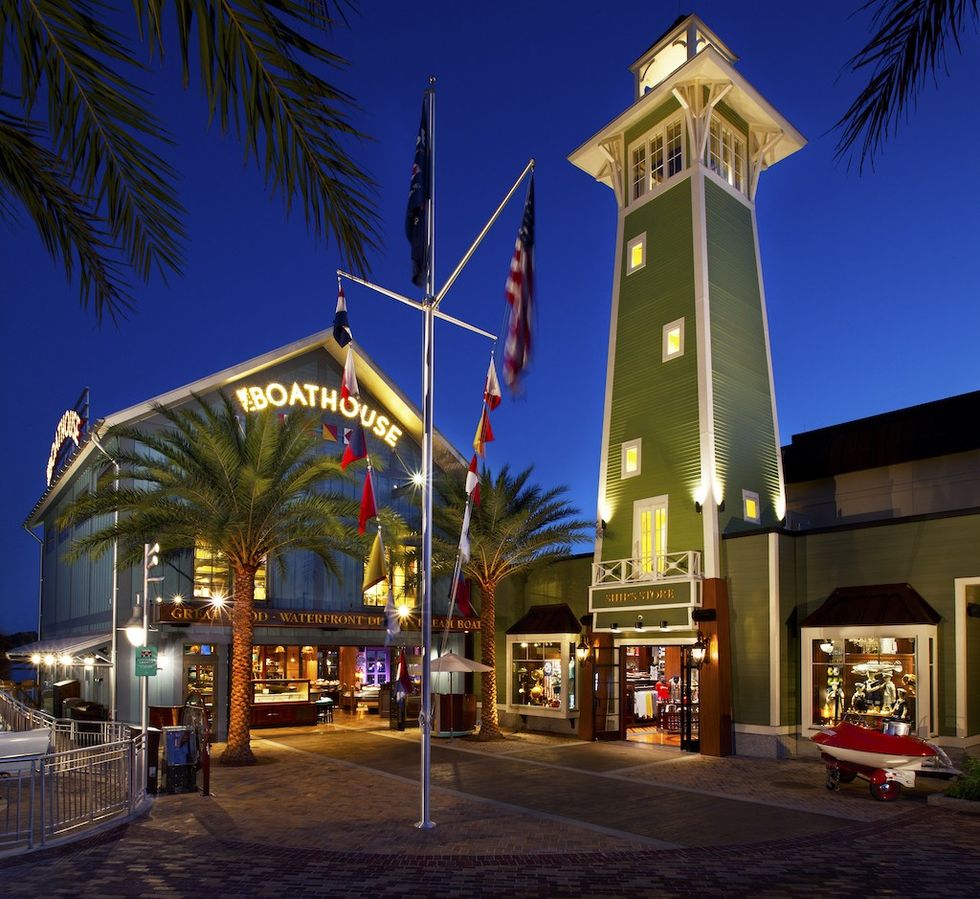 Th BOATHOUSE at Disney Springs\u00ae, Lake Buena Vista, Florida, USA
Th BOATHOUSE at Disney Springs\u00ae, Lake Buena Vista, Florida, USA 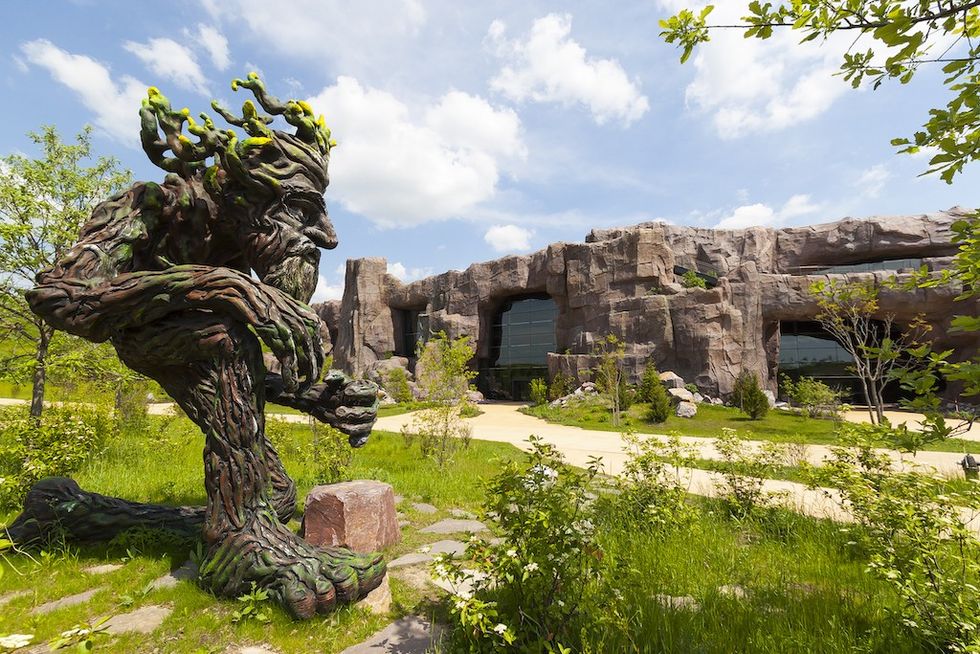 Epic Learning Campus Deep Space Auditorium, Madison, Wisconsin, USA
Epic Learning Campus Deep Space Auditorium, Madison, Wisconsin, USA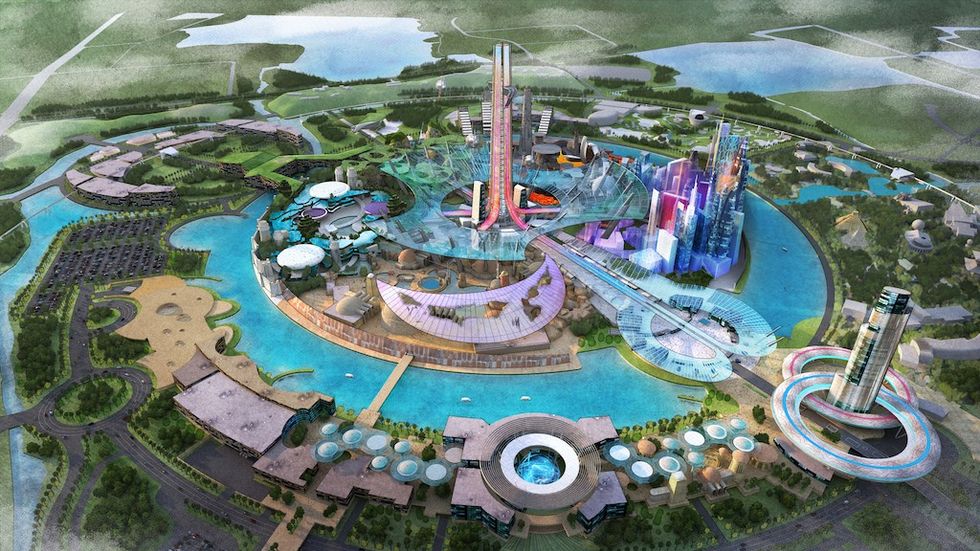 Celestial River Resort, Jiaxing, People’s Republic of China
Celestial River Resort, Jiaxing, People’s Republic of China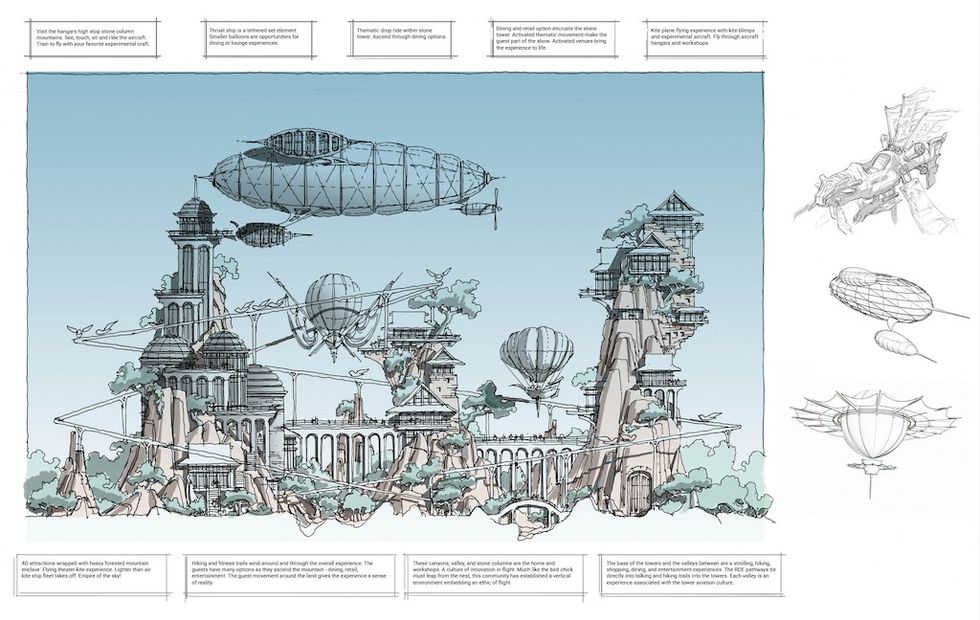 Luzhou Aviation Park, Luzhou, People’s Republic of China
Luzhou Aviation Park, Luzhou, People’s Republic of China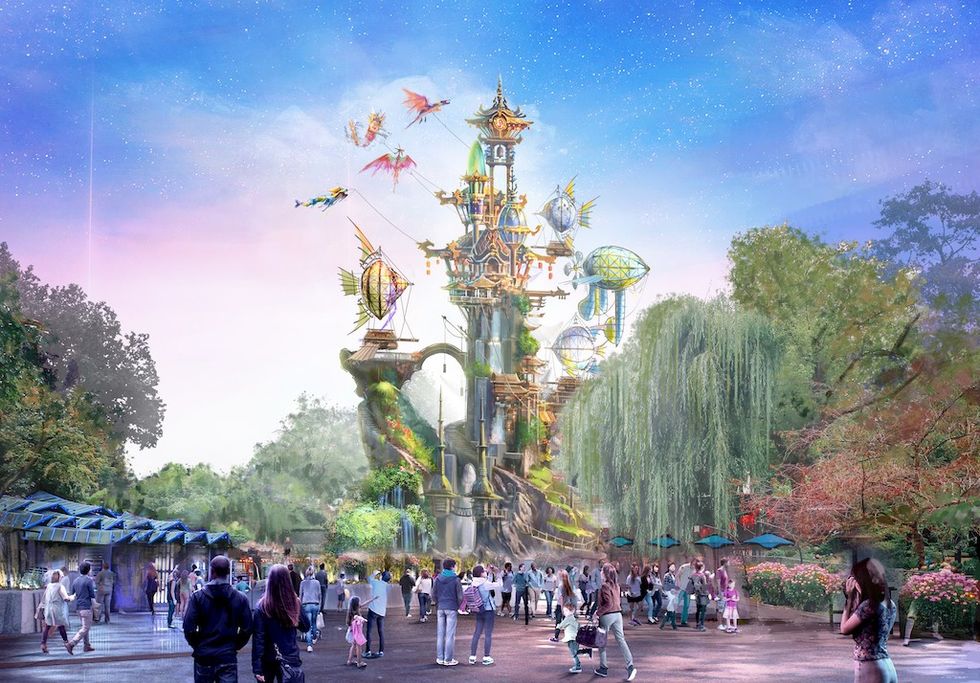 Luzhou Aviation Park, Luzhou, People’s Republic of China
Luzhou Aviation Park, Luzhou, People’s Republic of China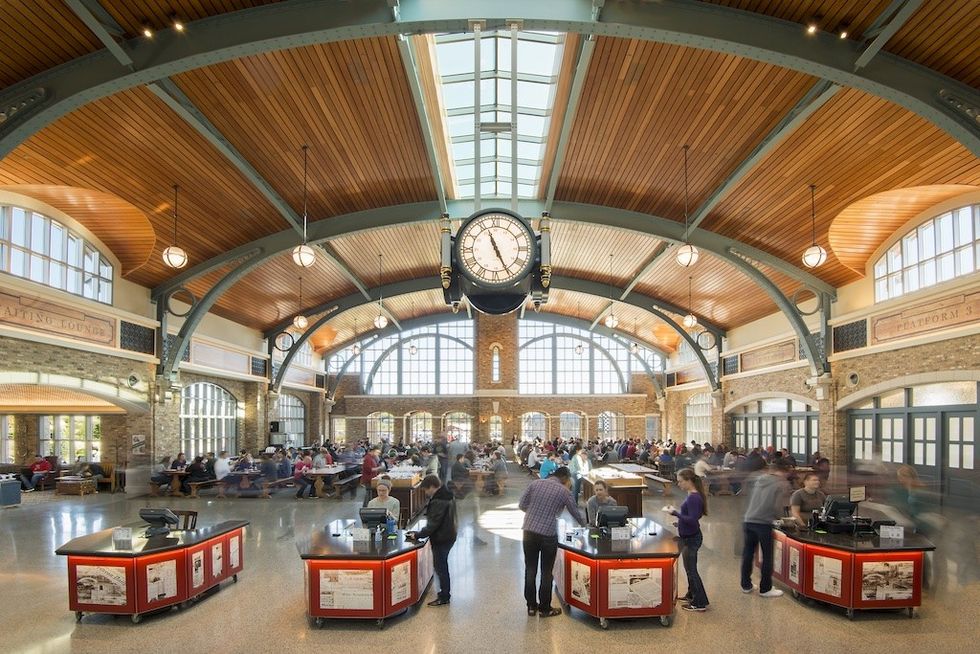 Epic Wizards Academy King’s Cross Dining Hall, Madison, Wisconsin, USA
Epic Wizards Academy King’s Cross Dining Hall, Madison, Wisconsin, USA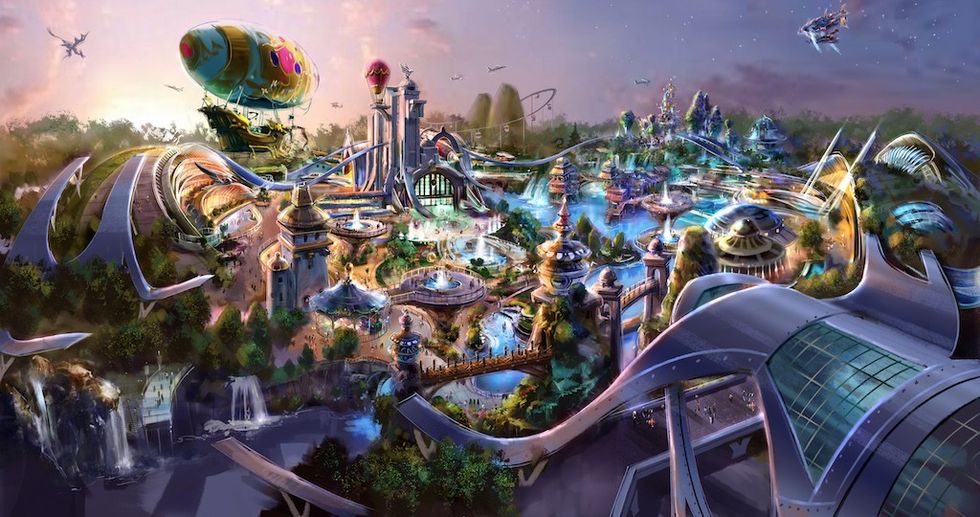 Luzhou Aviation Park, Luzhou, People’s Republic of China
Luzhou Aviation Park, Luzhou, People’s Republic of China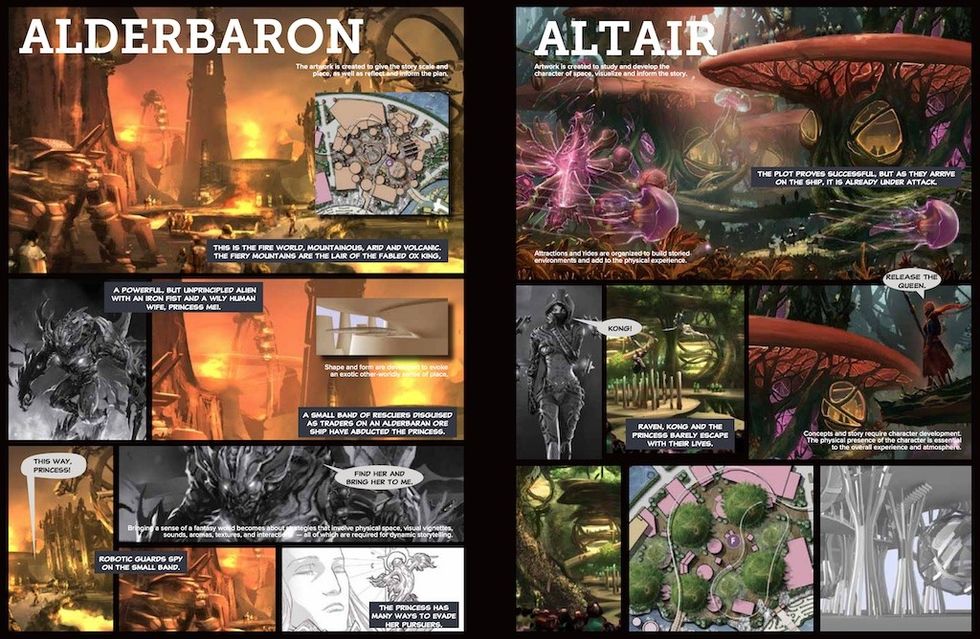 Celestial River Resort, Jiaxing, People’s Republic of China
Celestial River Resort, Jiaxing, People’s Republic of China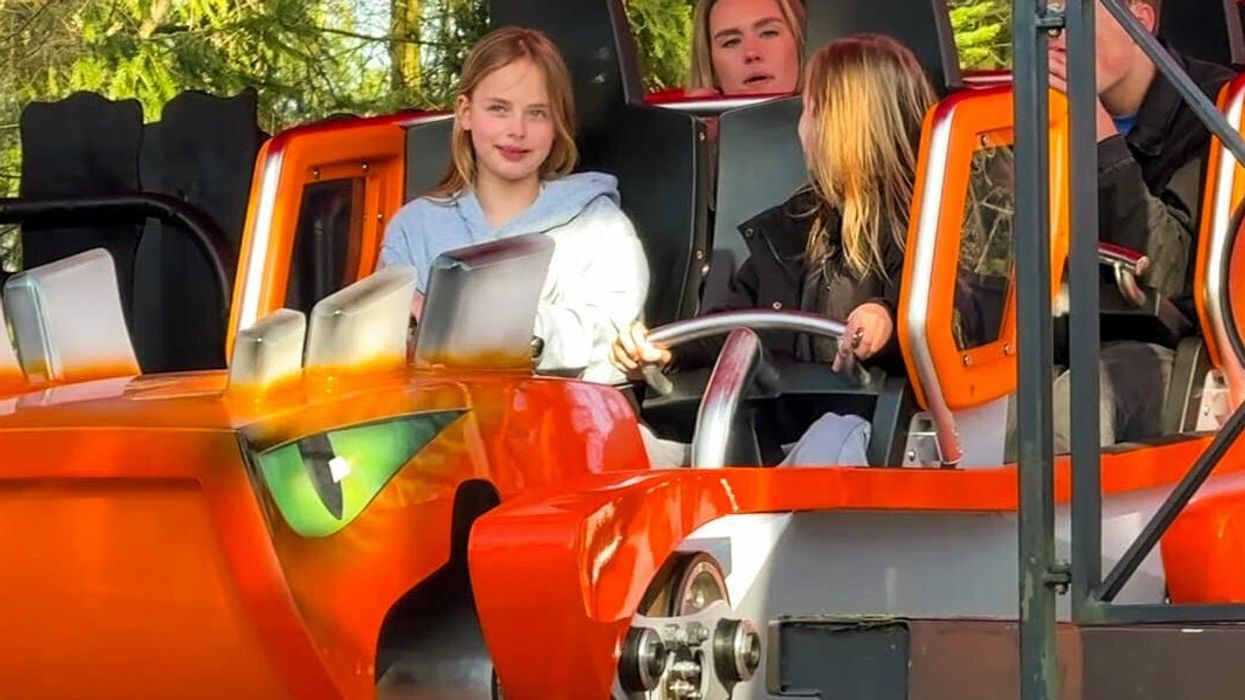
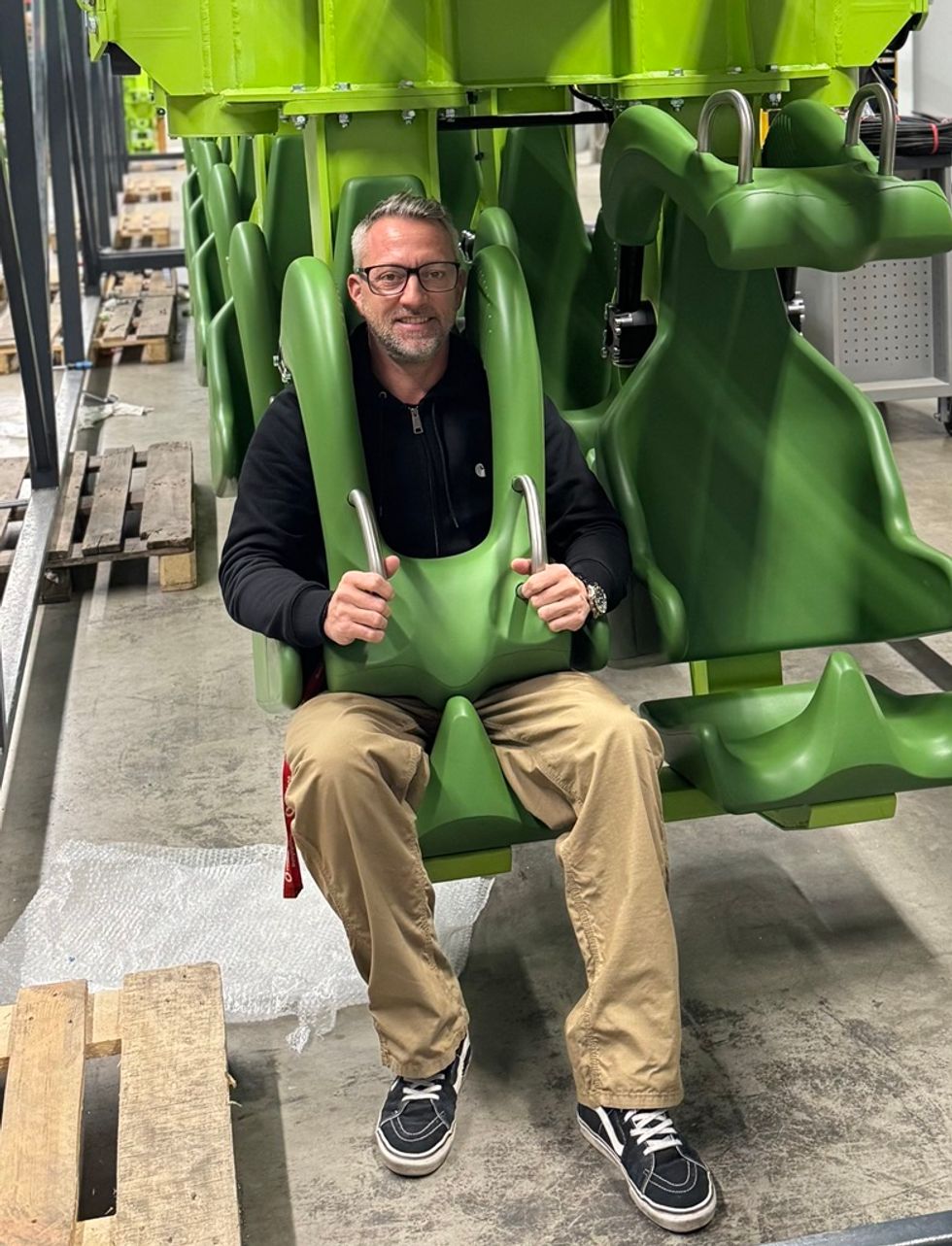
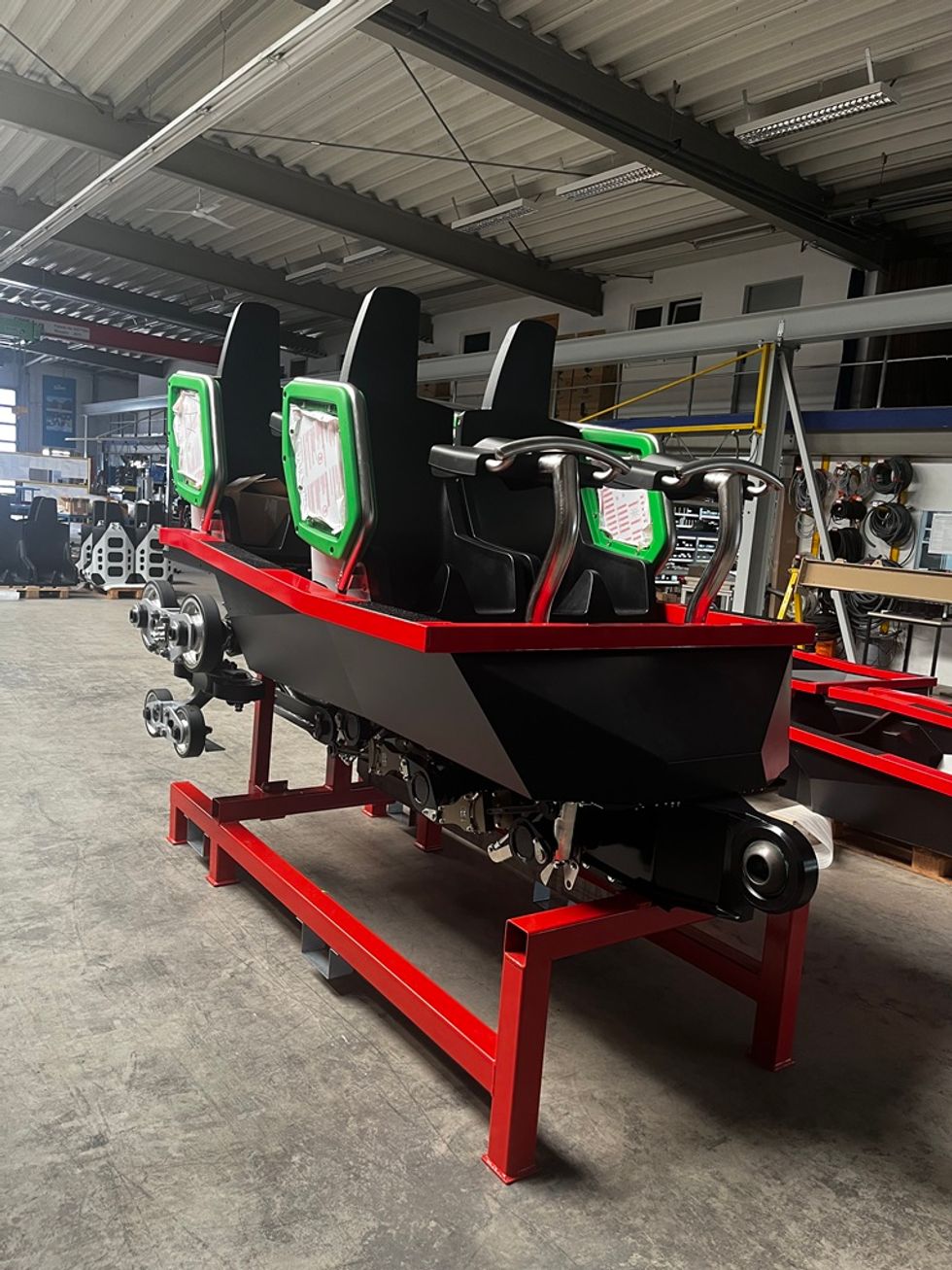
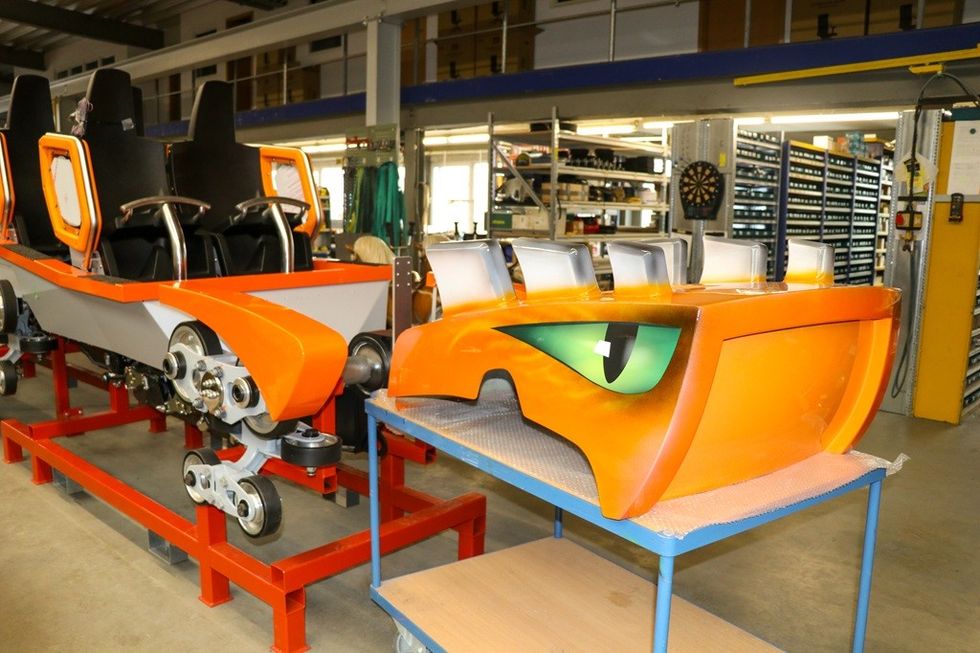
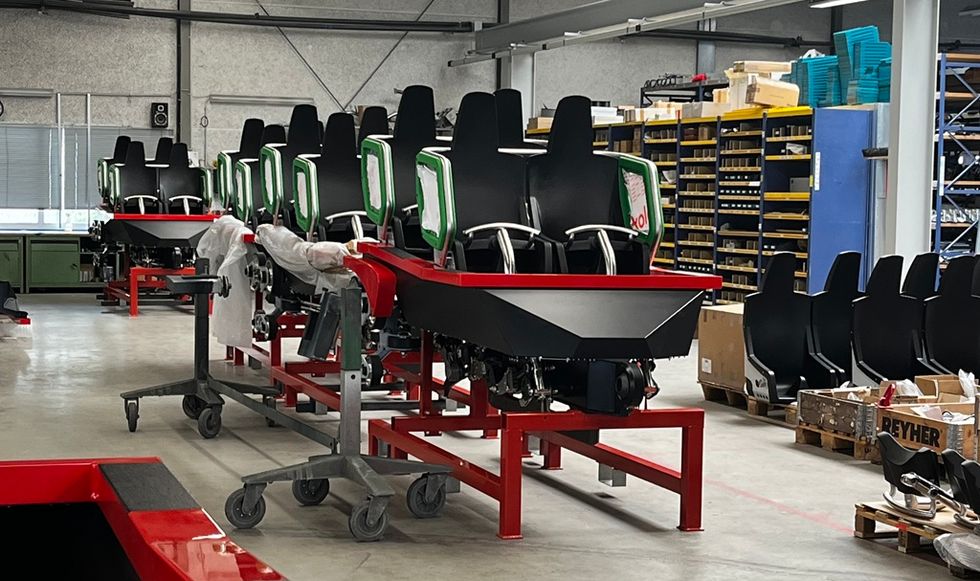
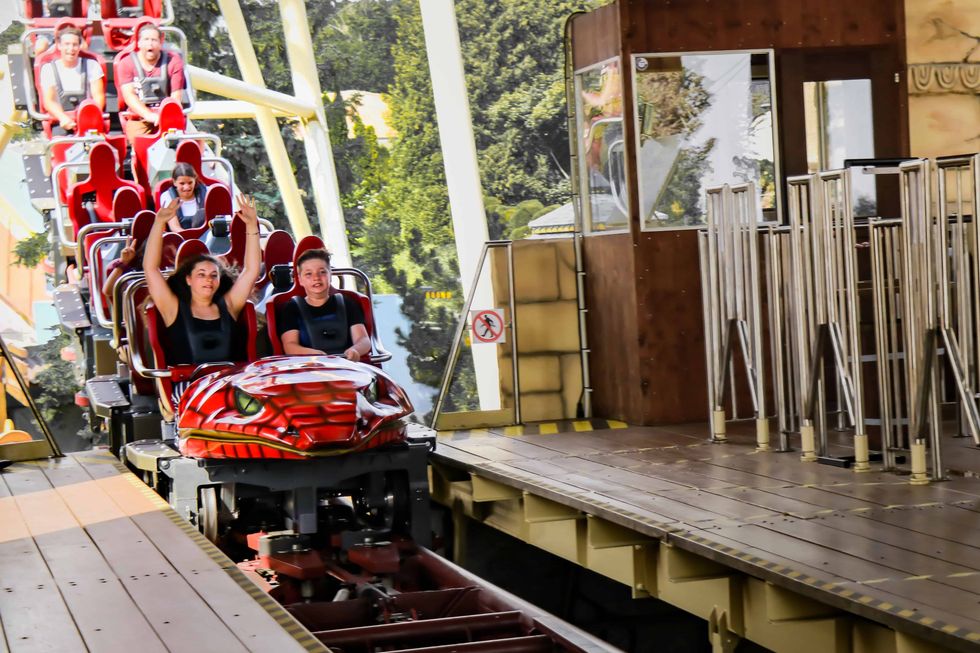
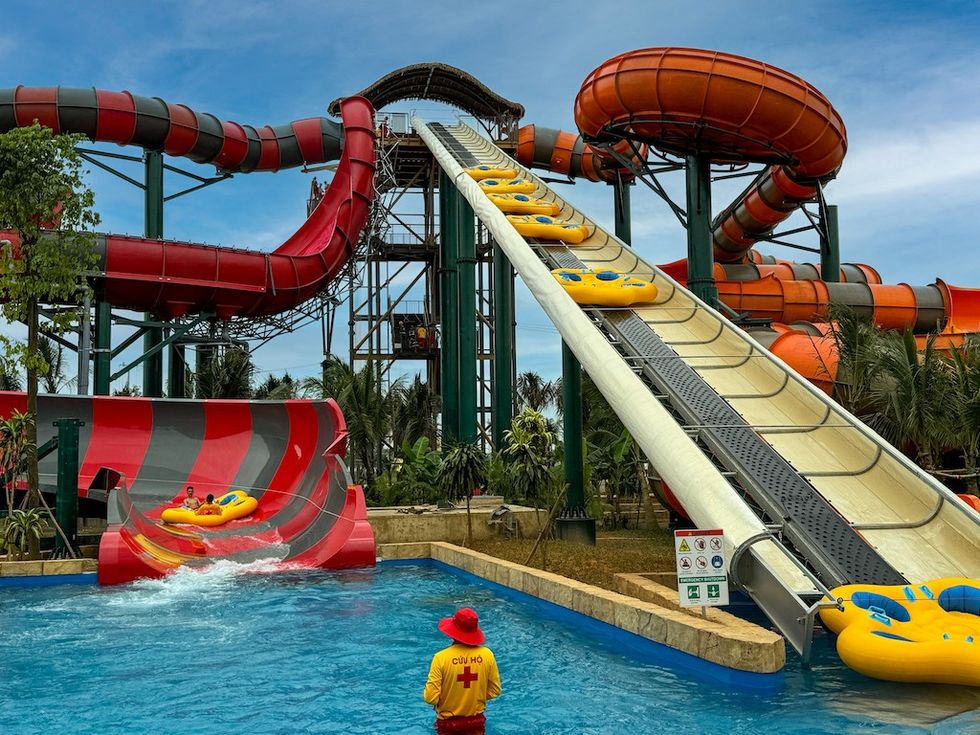
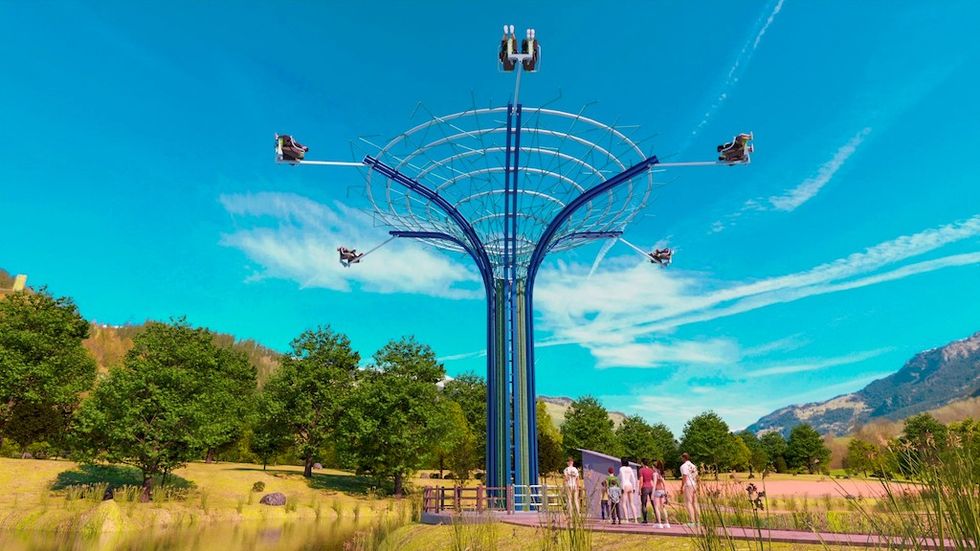
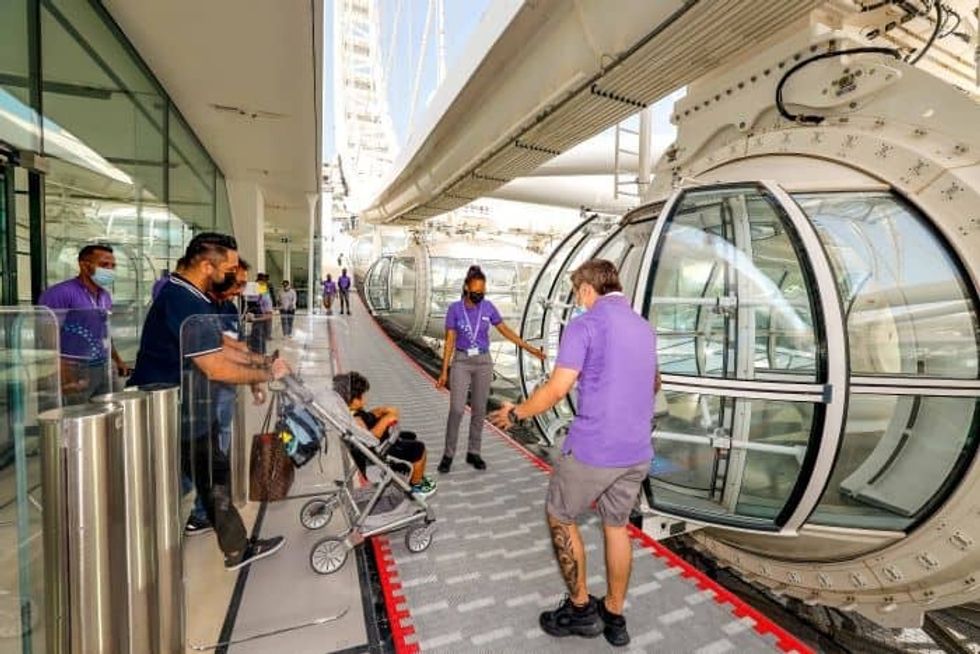
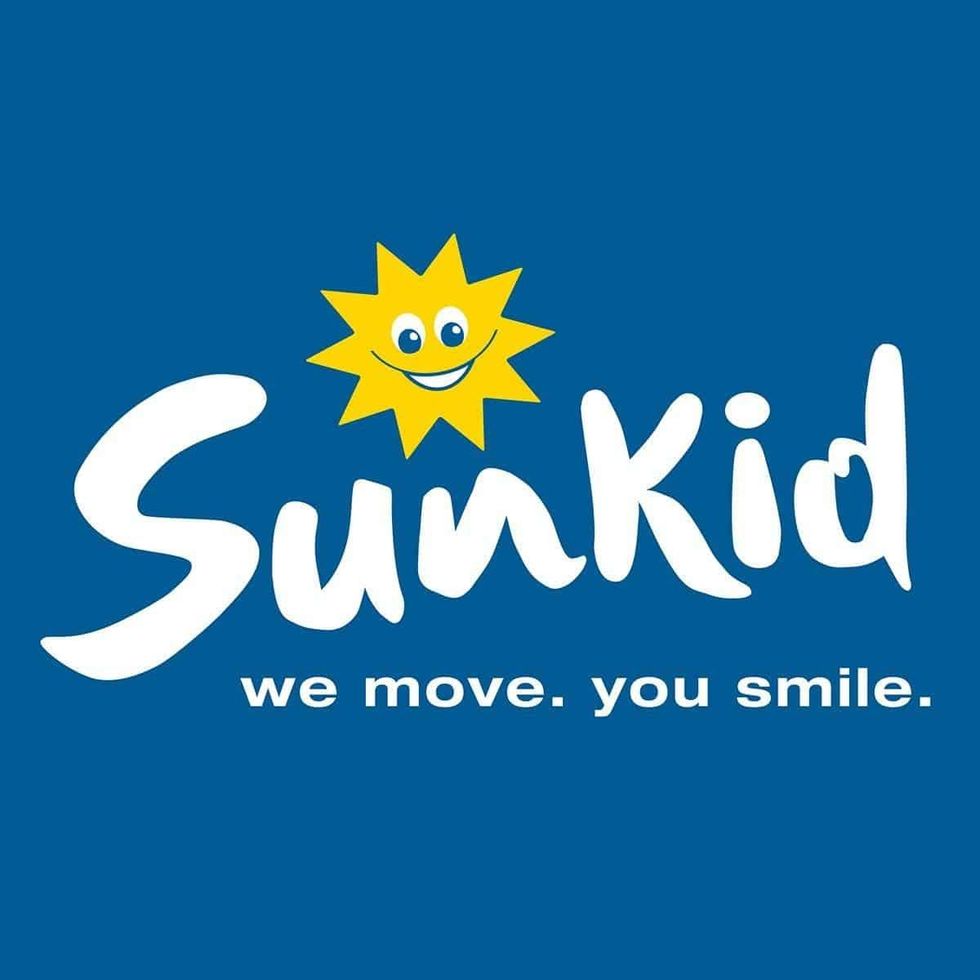
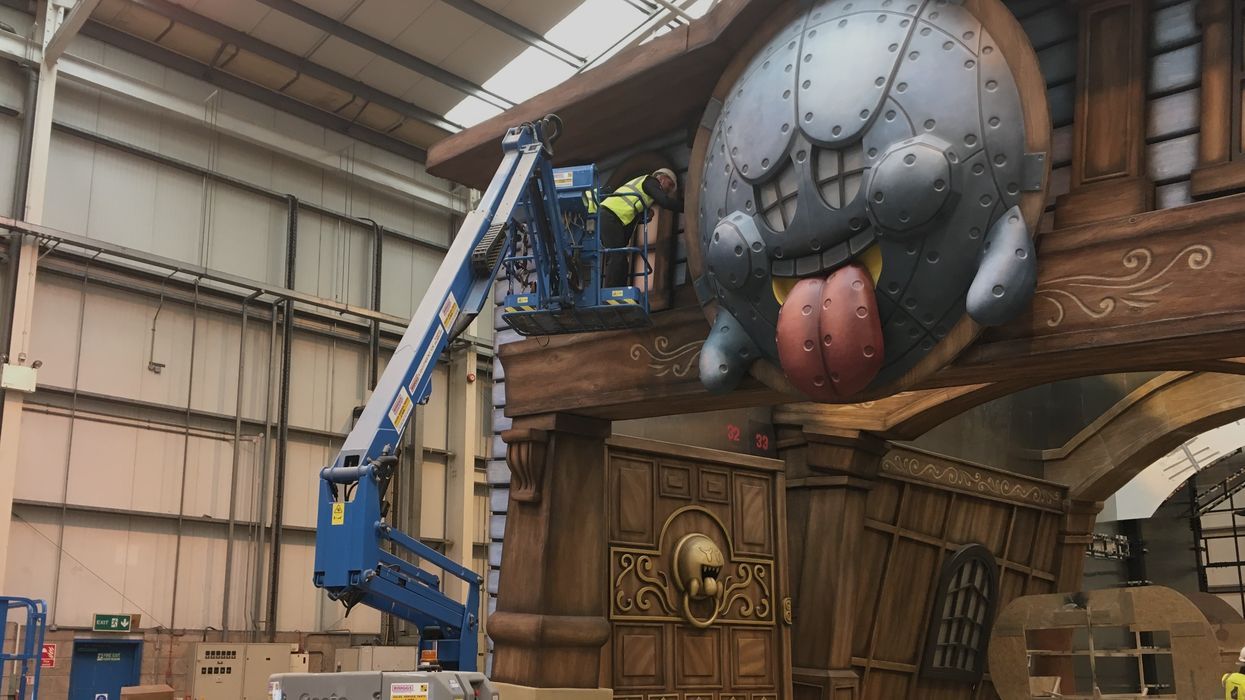
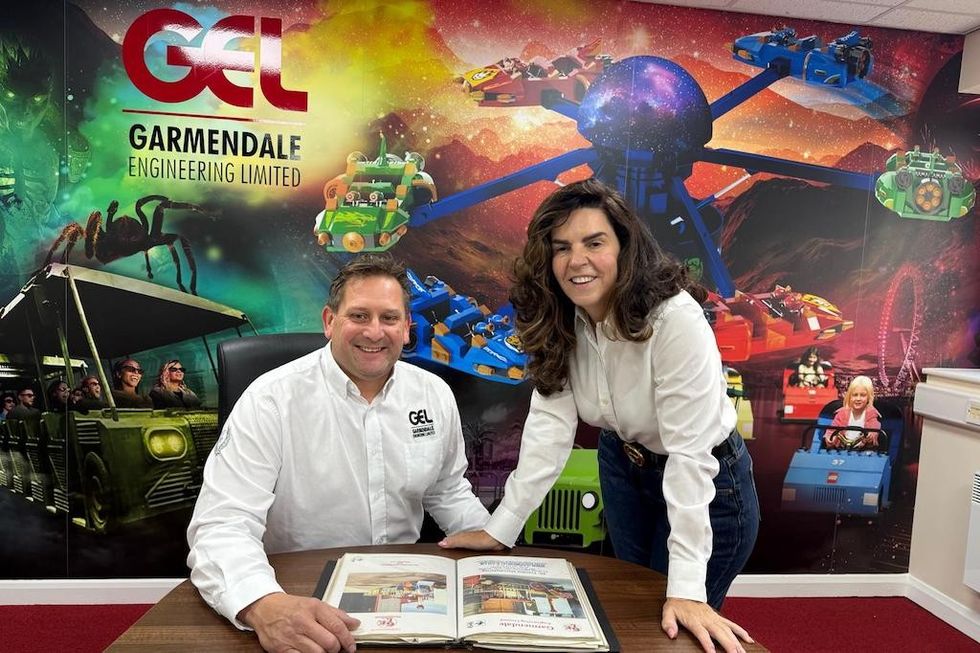
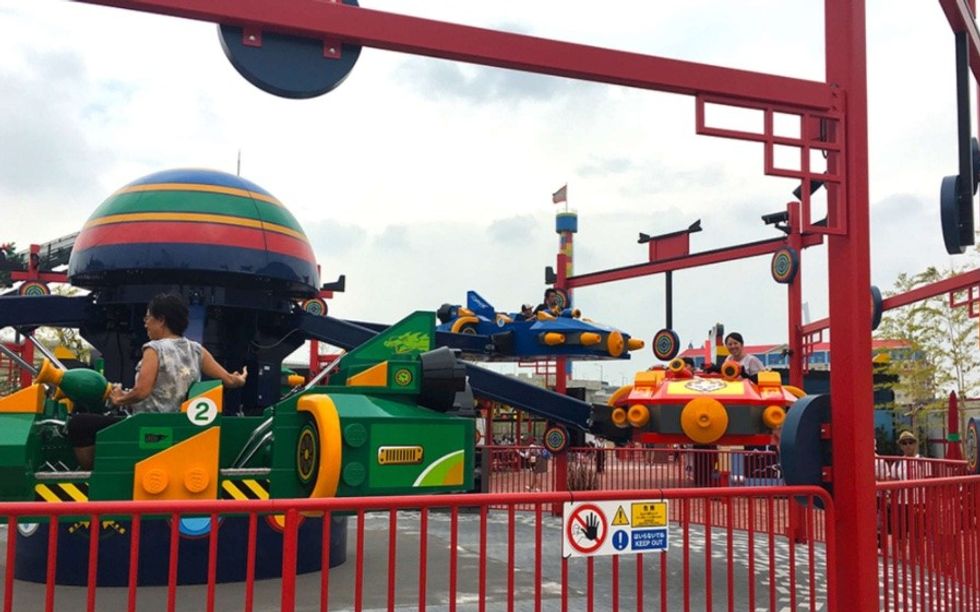
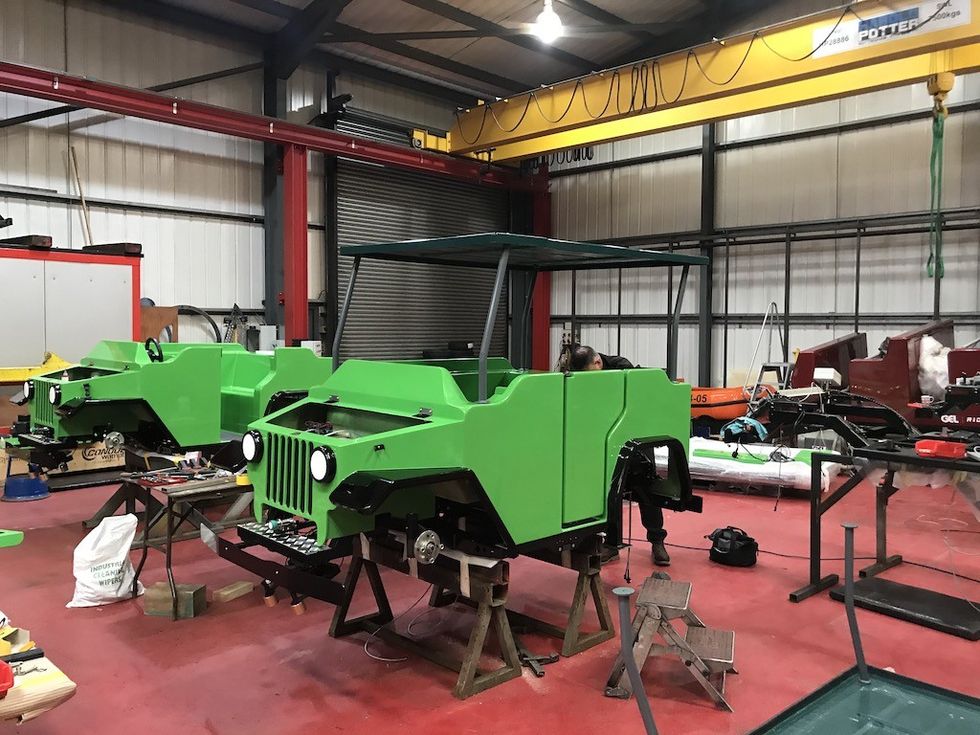
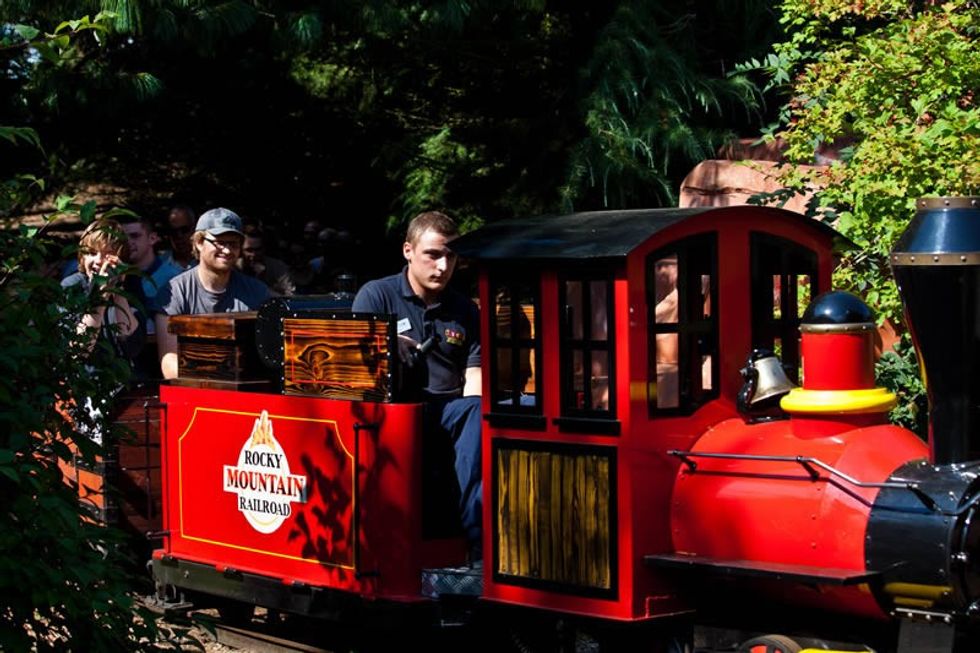

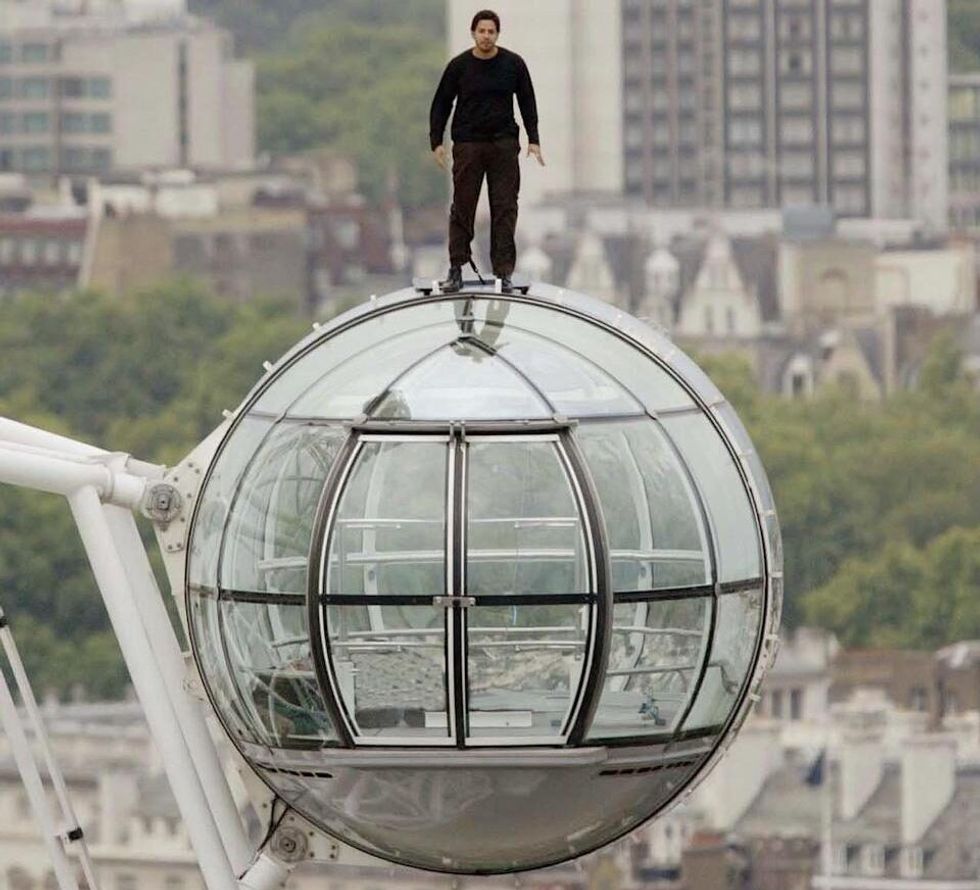 David Blaine on the London Eye - with Garmendale's engineering support
David Blaine on the London Eye - with Garmendale's engineering support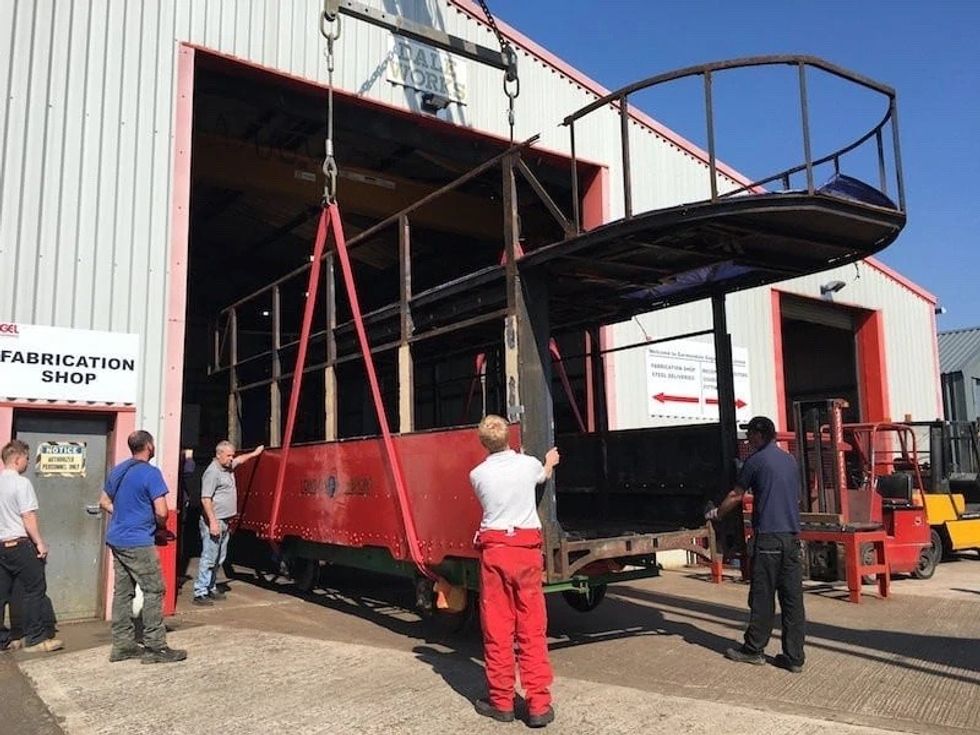 Refurbishing a traditional tram at the Dale Works facility
Refurbishing a traditional tram at the Dale Works facility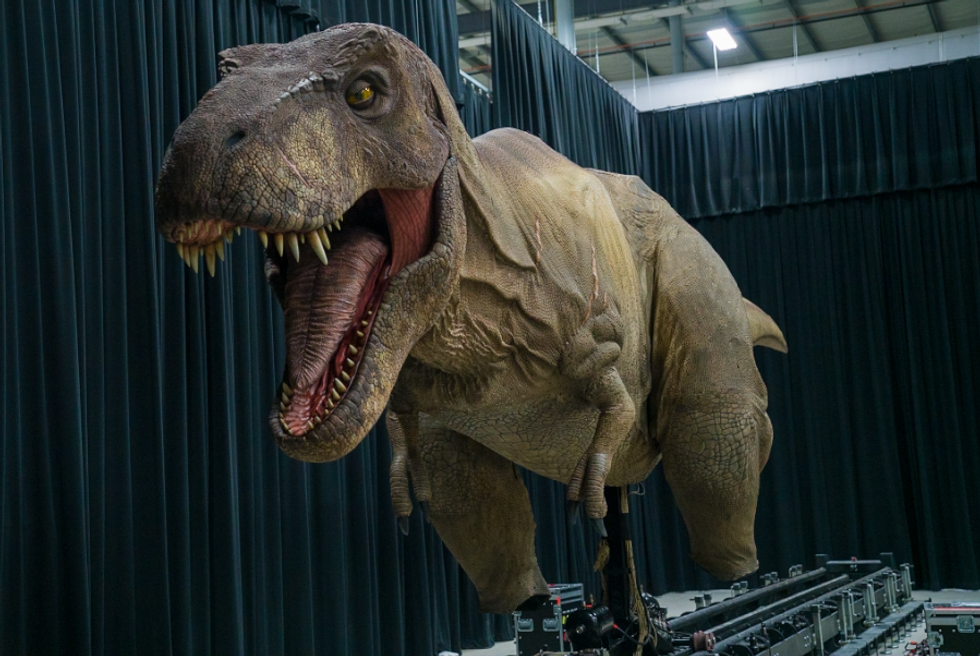 Garmendale engineered track for Jurassic Park Exhibition
Garmendale engineered track for Jurassic Park Exhibition